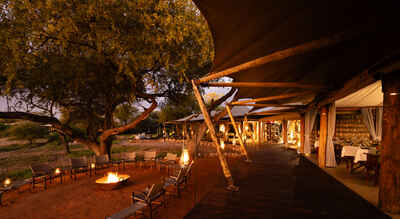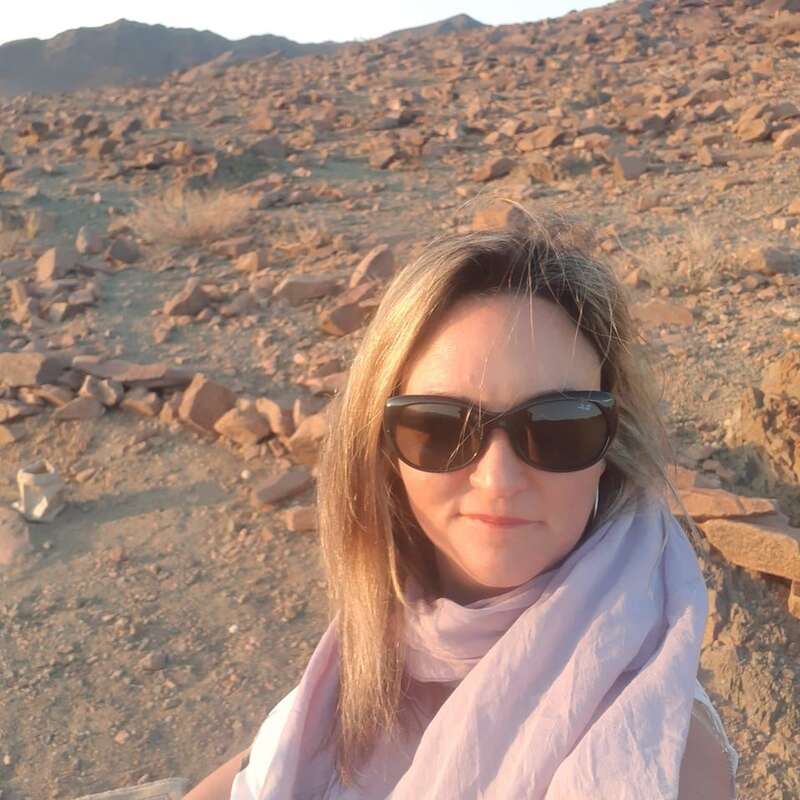About Onguma Tented Camp
In close proximity to the renowned Etosha National Park, Onguma Tented Camp also offers the privacy of its own reserve.
Nestled amongst mopane woodland, overlooking a productive waterhole, Onguma Tented Camp is the epitome of understated safari chic.
Owner André Louw’s distinct taste for architecture and interior design have made his lodges some of the top places to stay in Namibia, and– with its innovatively designed, triple-layer tents, blending natural elegance and style, – Onguma Tented Camp is no exception. A beautiful tented camp bordering eastern Etosha, it offers a sophisticated yet relaxed atmosphere in a peaceful location, coupled with a high standard of food and friendly, welcoming staff.
From all around the lodge there are great views over the floodlit waterhole, which is frequented by an array of plains game and sometimes lion too. On guided excursions, you can explore the private Onguma Reserve on foot as well as by 4x4. But arguably the bigger draw is Onguma’s close proximity to Etosha National Park with its fantastic wildlife viewing, including exceptionally good populations of rhino, elephant and lion.
While away your day at some of Etosha’s many waterholes and let the wildlife come to you. Then back in camp, relax in the comfortable lounge with a drink or two – always keeping an eye on the comings and goings at this waterhole; who knows what may turn up?
Our view
Onguma Tented Camp has a friendly, welcoming atmosphere in a comfortable, beautifully designed setting. Use the camp as a thoroughly relaxing base to explore the private Onguma Reserve or as a base to access Etosha National Park. The camp waterhole is an added bonus and you should see plains game here from the comfort of your own chalet
Accommodation
7 tented rooms
Children
Best for 13+
Open
All year
Activities

4WD Safari

Birdwatching

Guided walking safari

Private activities
Traveller reviews of Onguma Tented Camp
107 real, un-edited reviews from Expert Africa's travellers.
Arrived 5 Oct 2024, 4 nights
"Onguma Tented Camp review"
Overall rating: Excellent
Arrived 12 Sep 2024, 2 nights
"Onguma Tented Camp review"
Overall rating: Excellent
Arrived 10 Sep 2024, 4 nights
"Onguma Tented Camp review"
Overall rating: Excellent
Arrived 26 Aug 2024, 2 nights
"Onguma Tented Camp review"
Overall rating: Excellent
Arrived 14 Oct 2023, 2 nights
"Well frequented waterhole at Onguma"
Overall rating: Excellent
Arrived 13 Sep 2023, 2 nights
"Onguma Tented Camp review"
Overall rating: Good
Arrived 8 Sep 2023, 2 nights
"Onguma Tented Camp review"
Overall rating: Excellent
Arrived 30 Aug 2023, 2 nights
"Onguma Tented Camp review"
Overall rating: Good
Arrived 2 Jun 2023, 1 nights
"Onguma Tented Camp "
Overall rating: Excellent
Arrived 23 Apr 2023, 1 nights
"Onguma Tented Camp review"
Overall rating: Good
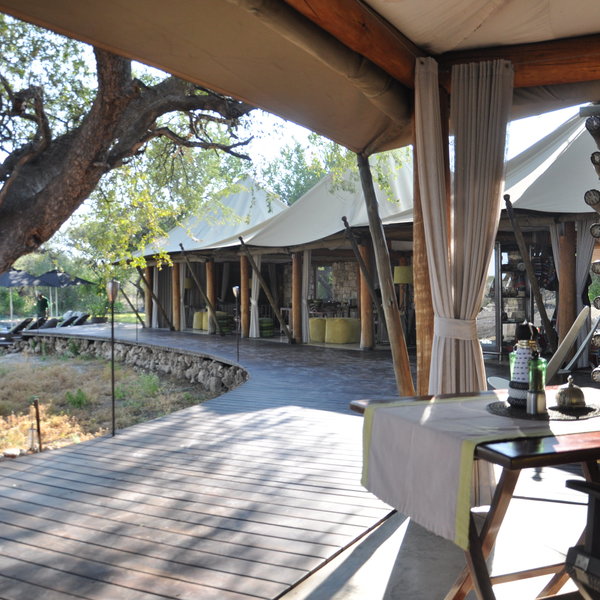
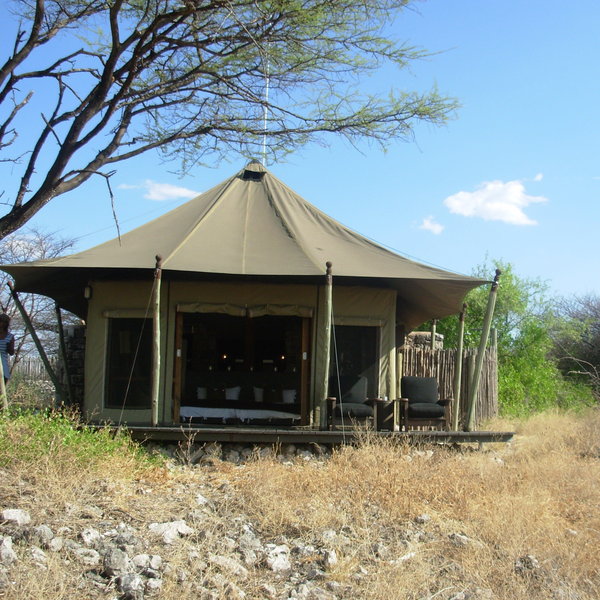
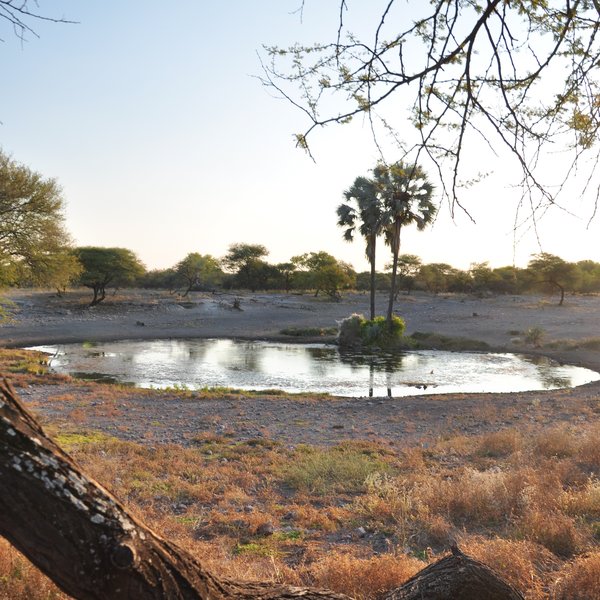
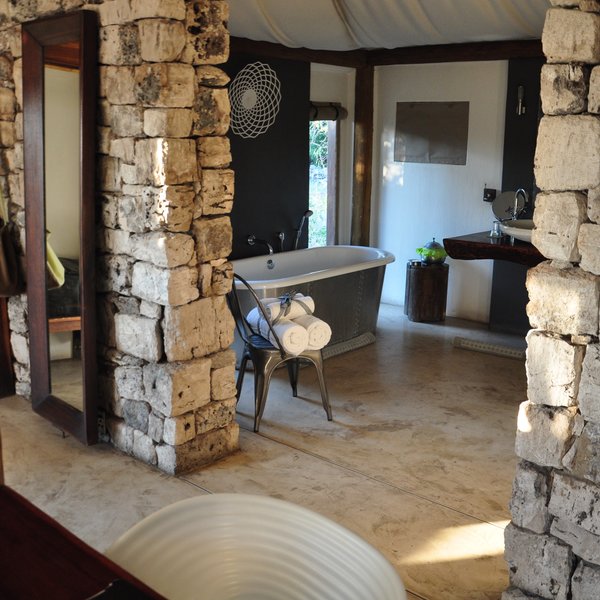
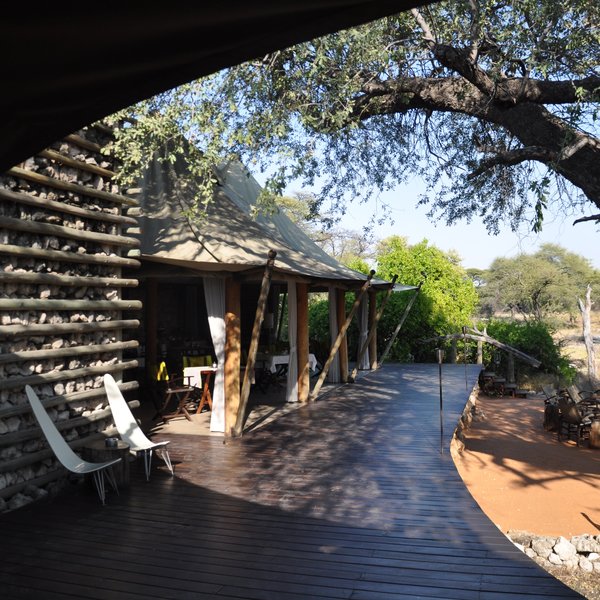
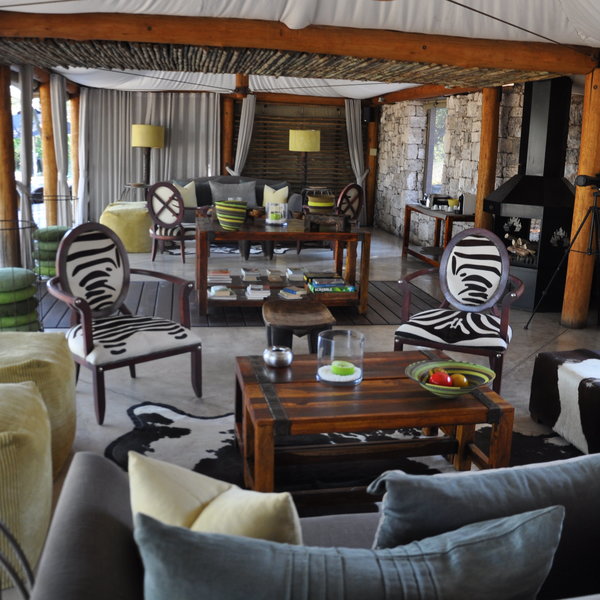
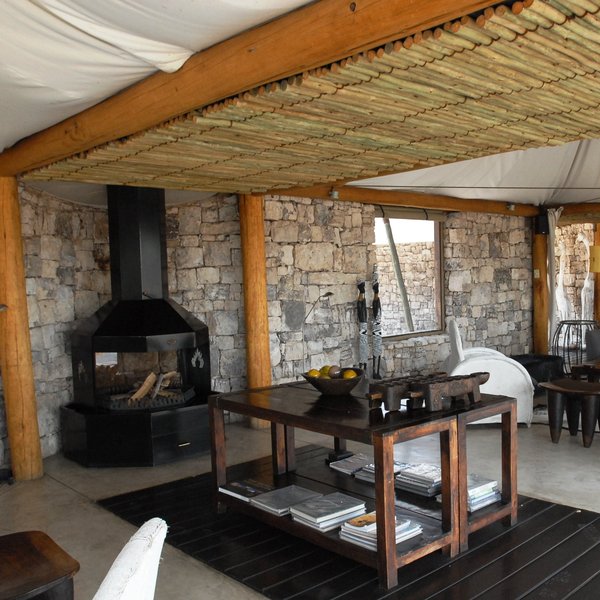
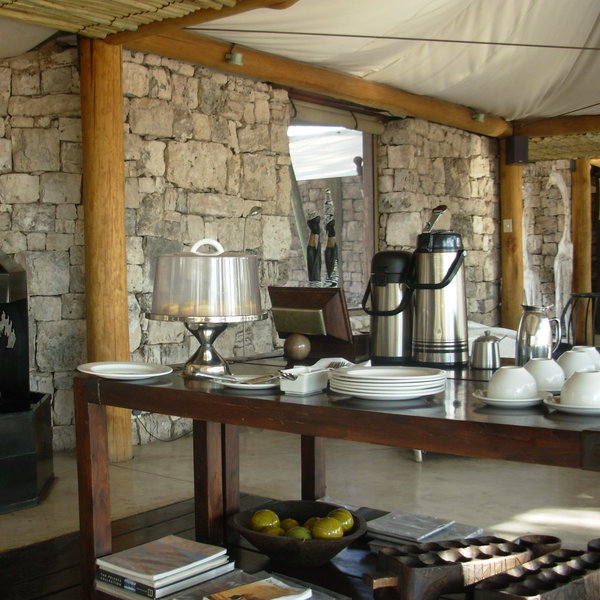
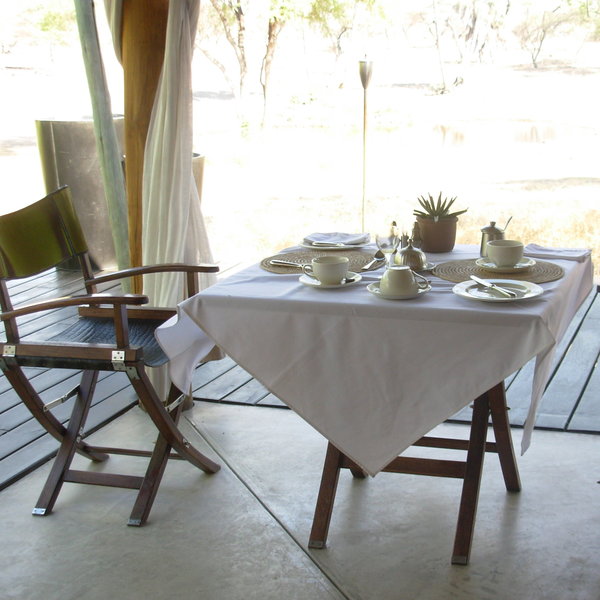
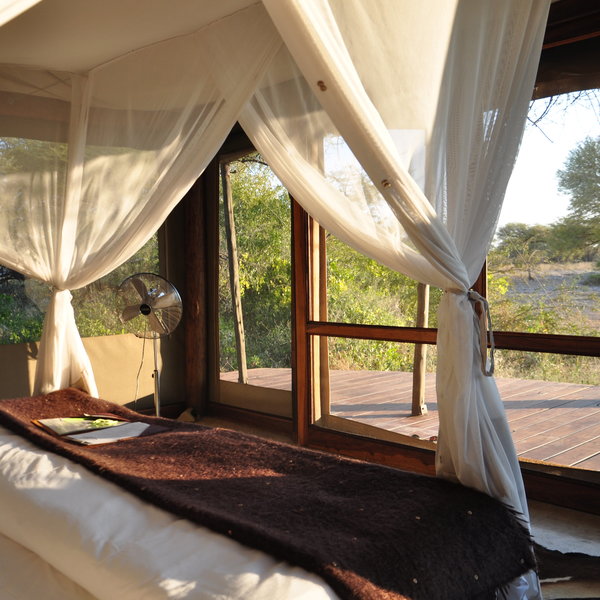
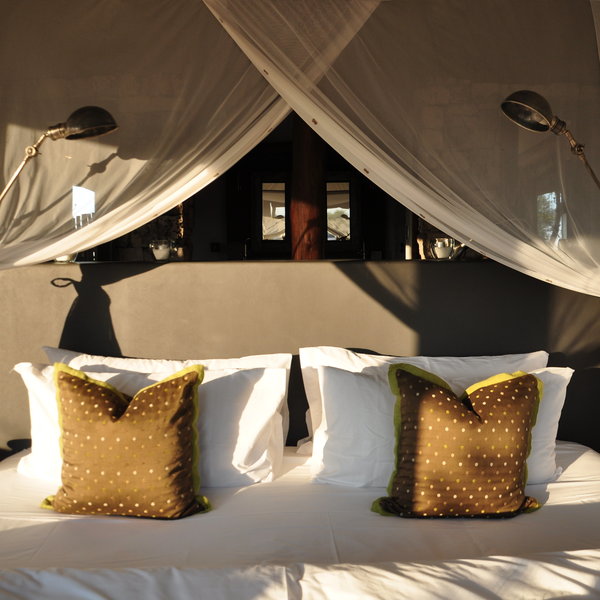
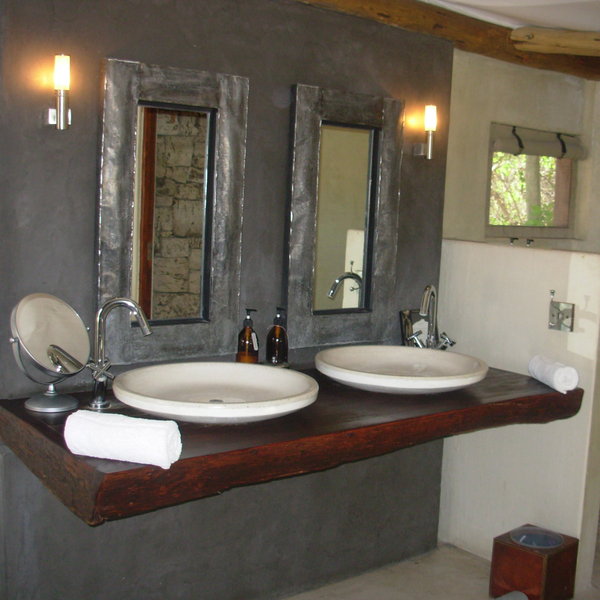
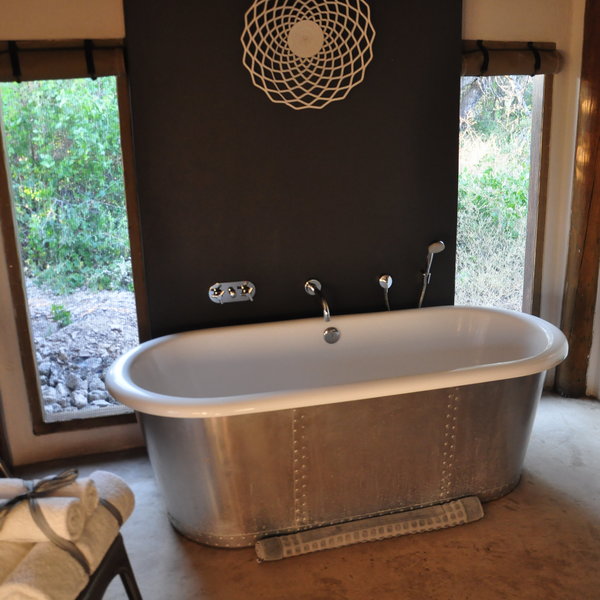
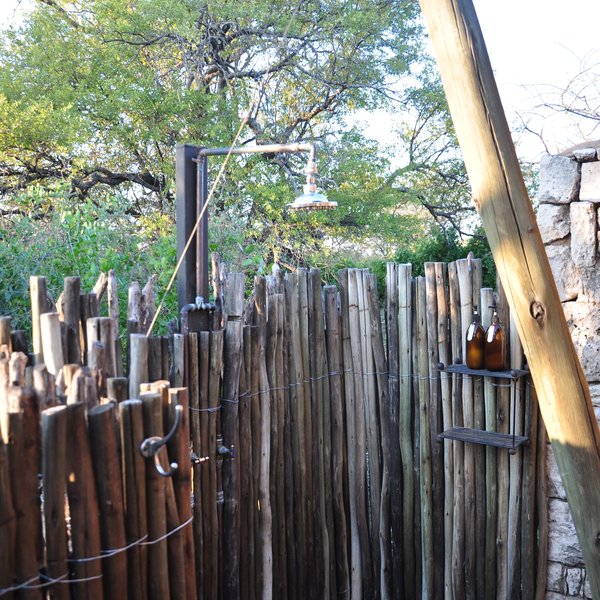
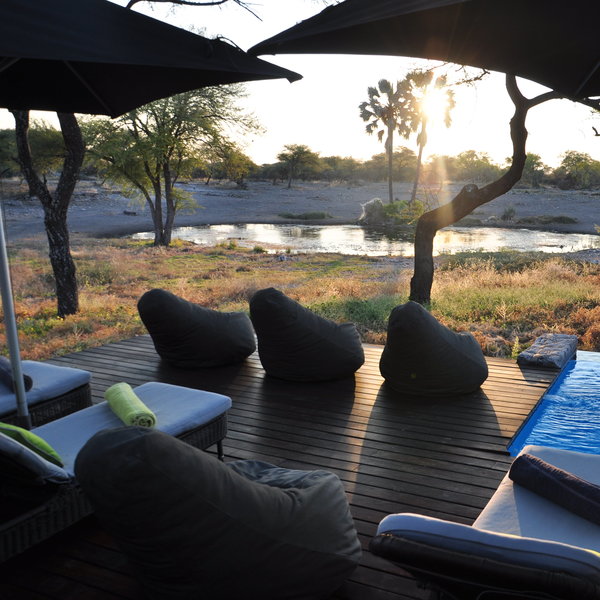
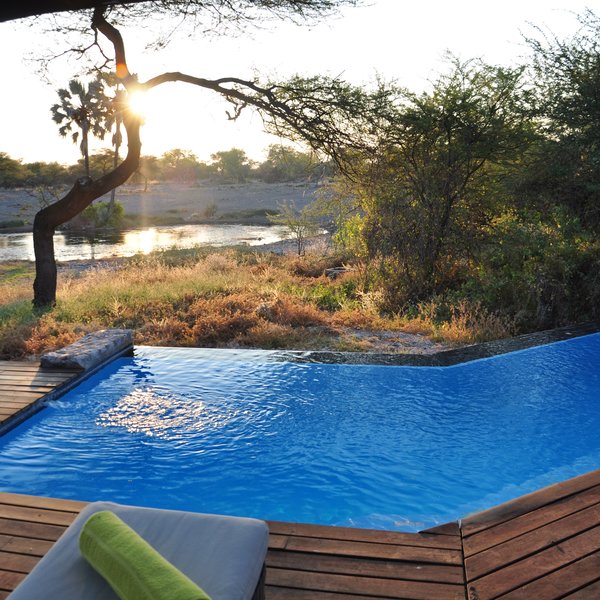
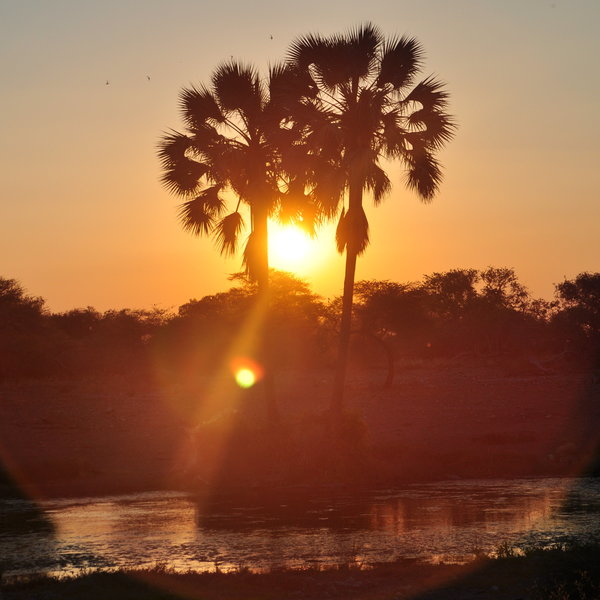
Expert Africa's gallery
When we travel we take lots of photos ourselves to give you a real and un-edited view of the safaris. See our 31 pictures of Onguma Tented Camp to get the candid view.
View gallerySafaris visiting Onguma Tented Camp
Just ideas, we'll always tailor-make a trip for you
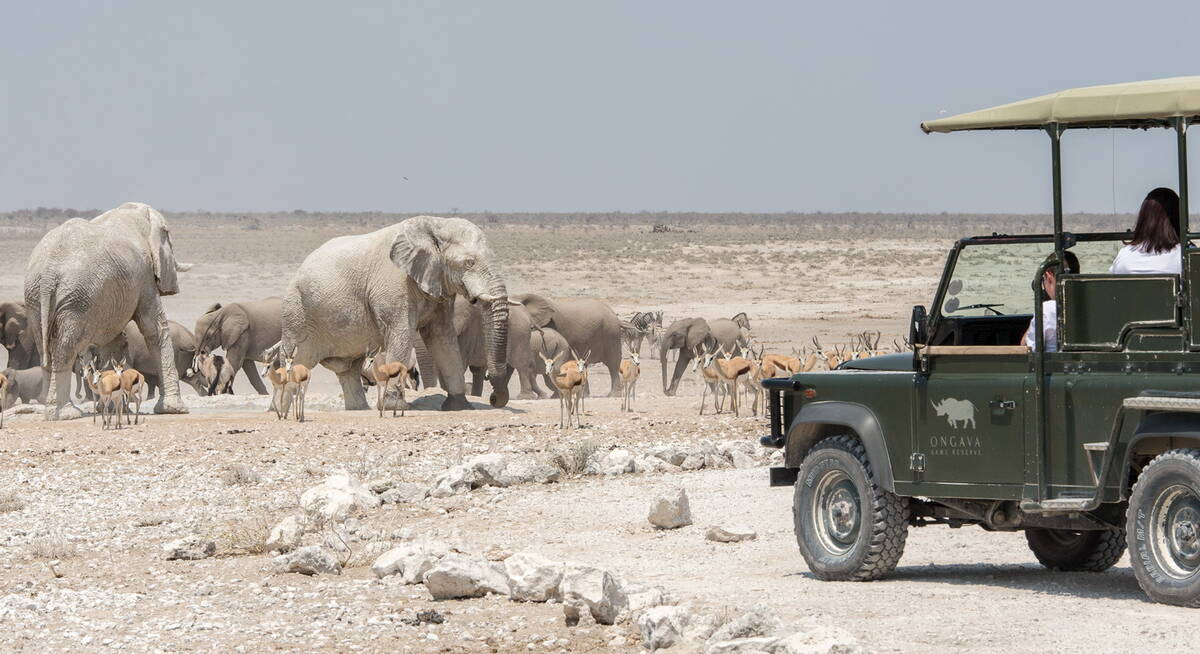
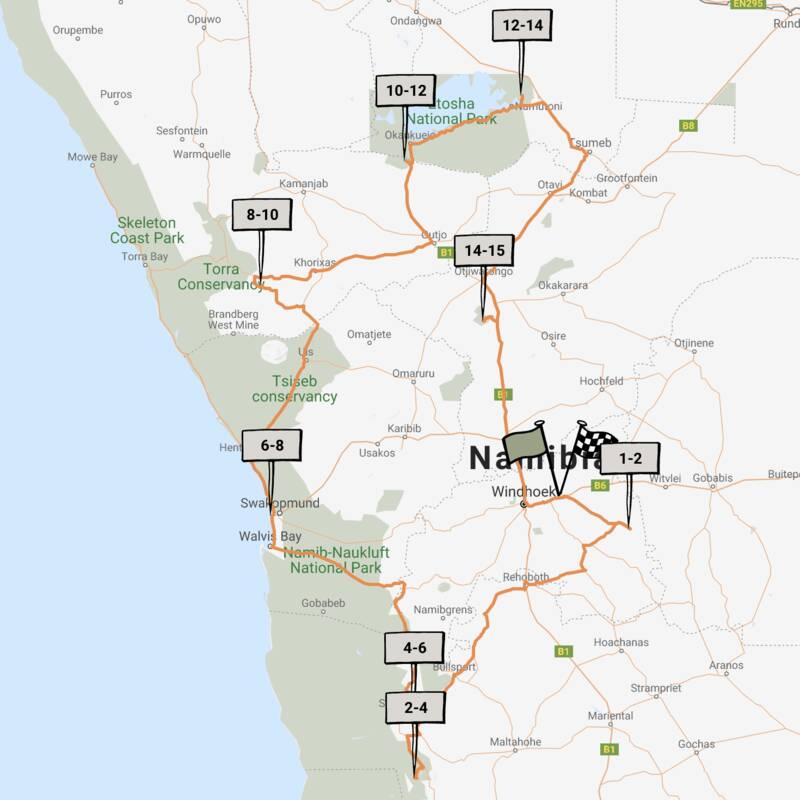
Brown Hyena Self-drive
14 days • 8 locations • 1 country
WINDHOEK AIRPORT TO WINDHOEK AIRPORT
The perfect trip for those who want to mix the adventure and freedom of a self-drive with some of our favourite luxury camps in Namibia and a great mix of activities.
Visiting Okonjima, Namib-Naukluft and 5 other areas
US$9,240 - US$10,190 per person
Onguma Tented Camp: Our full report
Onguma Tented Camp is situated on the private Onguma Reserve, which borders the eastern side of Namibia’s ...
... Etosha National Park – so you can explore great wildlife both on the reserve and inside the national park. Fresh, modern and tastefully designed, the camp is laid out around a floodlit waterhole which can be seen from both the main areas and the individual rooms.
The Tented Camp is one of four lodges on this reserve; the others are Onguma Bush Camp, Onguma Tree Top and Onguma The Fort, which is the most upmarket of the four.
Three beautiful hand-crafted giraffes stand guard over the entrance to Onguma Tented Camp's open-fronted main areas, which are housed beneath three tented roofs, like those of a circus big top. The design also incorporates large wooden poles to support the part canvas, part brick structure.
The décor is simple: earth tones with splashes of colour. The two almost identical open-plan lounges are each furnished with a plush charcoal sofa, a high-backed or zebra-print armchair, a few large bean bags, a dark wooden coffee table, a wooden saddle stool, and some bright scatter cushions. Separating these two areas is a tea/coffee station, and built into the limestone wall is a large furnace fireplace for chilly winter evenings. The lodge also boasts a wine cellar offering a good selection of wines.
Dining at Onguma Tented Camp is in a roofed area backed with a stone wall. In the summer months, the remaining sides are completely open, offering clear views over the floodlit waterhole, whereas during the rainy season or on cold winter evenings the canvas sides are lowered to keep out the cold.
Outside you’ll find a firepit – a great spot to socialise and keep warm in the evenings. During one stay here we saw a giraffe at the waterhole during dinner as well as numerous kudu, impala and zebra coming to drink throughout the day, and on our last visit in May 2018 there was plenty of activity too.
A walkway leads to the small infinity pool, an attractive area where beanbags and a few sunloungers beckon.
Gravel pathways link the main areas of Onguma Tented Camp with its seven tented rooms, which differ only in the location of the bathrooms.
Each room is set on a raised wooden platform with a large, partly shaded veranda, where two comfortable armchairs with a small table make it a pleasant place to watch wildlife at the waterhole. The big-top theme continues here, with the inner layer of material in each room supported by a large wooden central pole. The whole front section has double sliding glass doors in a wooden frame, with roll-down canvas flaps that can be zipped closed, and similar flaps covering the tent's large mesh windows.
Inside, the tents are both practical and comfortable. A high-backed armchair sits beneath a tall lamp. An animal-skin rug fronts the twin beds, which are pushed together against a concrete headboard dotted with tea lights. Metal bedside tables with adjustable reading lamps flank the beds.
Other practical furnishings, some behind the headboard, include wardrobes with dressing gown and slippers, full-length mirrors, luggage racks, shelving and a straw shopping bag with pool towels and a linen robe. There are double electric sockets, too, plus a free-standing fan, hairdryer, tea/coffee station, and even a jug of ice cubes.
Separated from the bedroom by two high limestone walls, the spacious en-suite bathroom boasts his and hers handbasins, with large horizontal mirrors hanging above, and a separate toilet with a wooden door. There's a stone walk-in shower with a powerful shower head and a large free-standing silver bath with great views of the bush. A tree stump serves as a small table, topped with bath salts in a large silver pot, while glass dispensers contain shower gel and shampoo. Each tent also has an outdoor shower, reached through a wooden door to the side of the room.
Although many visitors here drive themselves into Etosha National Park, activities from Onguma Tented Camp include morning and evening game drives into the park, albeit no further than Halali. The lodge also offers both shorter sunset drives on the Onguma Reserve, where no self-driving is permitted, and morning bush walks, when your guide will point out many of the smaller inhabitants on the reserve that you may miss from a safari vehicle.
Activities
4WD Safari
Birdwatching
Guided walking safari
Private activities
Families & children
- Attitude towards children
- Onguma Tented Camp is not fenced, so younger children may not stay here for safety reasons.
- Property’s age restrictions
- No children under 12 are allowed at the camp. For safety reasons children under 10 years are not permitted on game-drive vehicles and those under the age of 16 may not take part in walking safaris.
- Special activities & services
- No
- Equipment
- No
- Generally recommended for children
- As this is an unfenced camp with a fairly adult atmosphere, we would agree with the camp’s age limit of 12 years.
- Notes
- Neither the camp nor the pool are fenced, so children should be supervised at all times.
Food & drink
- Usual board basis
- Full Board & Activities
- Food quality
- When we last visited in May 2018 we didn’t get to eat here, however during our previous stay in June 2017 (as with earlier stays) we found both the food and the service to be of a consistently high standard.
Breakfast was served as a buffet with a selection of cereals, fruit salads, fresh fruit, a choice of confectioneries, a cold meat platter and the option to order hot breakfast items from the kitchen, including porridge, pancakes, omelettes and a traditional full English breakfast.
Lunch can either be taken in camp or, if you ask in advance, a packed lunch can be prepared for you to take into Etosha. This will save you having to return to the lodge at lunch time, if you fancy making the most of a full days self-drive excursion into the Park.
Dinner is a delicious four-course meal. During our stay, we sampled a creamy broccoli soup followed by an entrée of crumbed mushroom served with tartar sauce. There were two choices for main course: either grilled kudu steak with brown onion sauce or pan-fried kingklip with a lemon caper sauce. Both were served with roasted potato wedges, sweet carrots and green beans. The meal was rounded off with a delicious malva pudding with custard. - Dining style
- Individual Tables
- Dining locations
- Indoor and Outdoor Dining
- Further dining info, including room service
- Room service is not available as standard.
- Drinks included
- Soft drinks, house wine and local spirits are included in the full board rate, but fine wines, champagne and imported spirits and liqueurs will be charged as extras.
When staying on a half board basis, drinks are not included.
Filtered water is available in the bedrooms, and bottled water available on organised game drives.
Our travellers’ wildlife sightings from Onguma Tented Camp
Since mid-2018, many of our travellers who stayed at Onguma Tented Camp have kindly recorded their wildlife sightings and shared them with us. The results are below. Click an animal to see more, and here to see more on our methodology.

97% success

97% success

93% success

90% success

76% success

62% success

39% success

37% success

36% success

30% success

27% success

26% success

25% success

21% success

17% success

0% success

0% success
Getting there
- Location
- Etosha National Park, Namibia
- Ideal length of stay
- 2–3 nights
- Directions
- The turn-off onto the Onguma Reserve is just a short drive along the C38 from Etosha's Von Lindequist Gate. The Tented Camp is 10km from the entrance gate into the reserve.
Note that the camp offers transfers free of charge from Mokuti Lodge. - Accessible by
- Self-drive or Fly-and-Transfer
Special interests
- Photography safaris
- Onguma’s water-level hide affords guests unique perspectives of the reserve's wildlife and the chance to calmly sit and unobtrusively enjoy nature. Enjoy a few hours at this well equipped hide as an activity from Onguma Tented Camp.
- See ideas for Photography safaris in Namibia
- Walking safaris
- A walking safari if a great way to experience a different side of the bush. Explore the Onguma Reserve with a professional guide from Onguma Tented Camp and focus on the smaller things on a bush walk.
- See ideas for Walking safaris in Namibia
- Wildlife safaris
- With its location on the private Onguma Reserve, and Etosha National Park on its doorstep, Onguma Tented Camp is a fantastic base from which to explore these wildlife-rich areas on any safari in Namibia.
- See ideas for Wildlife safaris in Namibia
- Luxury safaris
- Combining luxury with traditional style, Onguma Tented Camp lies on the eastern side of Namibia’s Etosha National Park. Whether you're keeping a look out for passing animals from your private veranda or relaxing in the roll-top bath, the watchword here is comfort.
- See ideas for Luxury safaris in Namibia
Sustainability
Oshivelo Farming and Onguma Anti-Poaching Unit
As well as providing excellent safari lodges, in 2012 the Onguma Group set up a large-scale sustainability project, Oshivelo Farming, which successfully provides jobs and income for many of the local people; at present there are over 180 permanent staff, plus another 100 seasonal employees. The farm they have cultivated and developed has grown in size over the years, and now produces a vast array of vegetables, so much so that several hundred tonnes of vegetables are currently sold each month - making it one of the top five vegetable producers in Namibia. Through the project, they are also able to help the local Oshivelo community with resources for the school, and have built the village soccer field.
Onguma are also involved in conservation and as such run the Onguma Anti-Poaching Unit, on the reserve, to help protect the endangered population of rhino. Since its introduction, rhino poaching on the reserve has dramatically decreased, which is great news!
See more great sustainability projects in Namibia
Communications
- Power supply notes
- There is a back up generator
- Communications
- There is cellphone reception in camp, with the signal stronger in the main areas. Both the main areas and the individual rooms have WiFi.
- TV & radio
- No
- Water supply
- Borehole
- Water supply notes
- All rooms have full plumbing.
Health & safety
- Malarial protection recommended
- Yes
- Medical care
- Members of the team at Onguma have first aid training. The nearest doctor is in Tsumeb, about 112km from the reserve, or a drive of around 1½ hours. In an emergency, patients would be driven, or air rescued to Windhoek.
- Dangerous animals
- High Risk
- Security measures
- Guests are escorted to and from their tents after dark.
There are 24-hour security guards at the entrance gate to the Onguma Reserve, and no day visitors are permitted. - Fire safety
- Fire extinguishers are positioned inside each tent and in the main areas.
Useful info
- Disabled access
- Not Possible
- Laundry facilities
- Laundry can be done at extra charge.
- Money
- Each room has a small safe. There is no currency exchange.
- Accepted payment on location
- Payment is accepted by Visa and Mastercard or in cash in Namibian dollars or South African rand.
Plan and book your trip with Expert Africa
All of our trips are tailor-made, so we'll always adapt them to suit you. Talk to an Expert and let us plan and arrange your perfect trip.

Talk to an Expert
Call or email us now! We’ll match you with the Specialist in our team who is best suited to help you. Then together we can start planning your trip.

Set up your itinerary
Based on our experience and your ideas, your specialist will create a detailed, costed itinerary. We’ll refine it together, until we have a trip that you’re perfectly happy with.

Prepare for your trip
The same Specialist will make the seamless arrangements for your trip, send you detailed travel documents, and be available to answer any questions before you depart.

Travel with peace of mind
After you set off, you’ll be cared for by our partners in Africa, most of whom have worked with Expert Africa for decades. And if you ever need us urgently, we’re available 24/7.

When you return
We love to learn about your trip, and so will always be grateful if you’ve the time to give feedback to your Specialist when you return.
Onguma Tented Camp's location
Look closer at the environment and surroundings of Onguma Tented Camp.
Other lodges in Etosha National Park
Alternative places to stay in this same area.
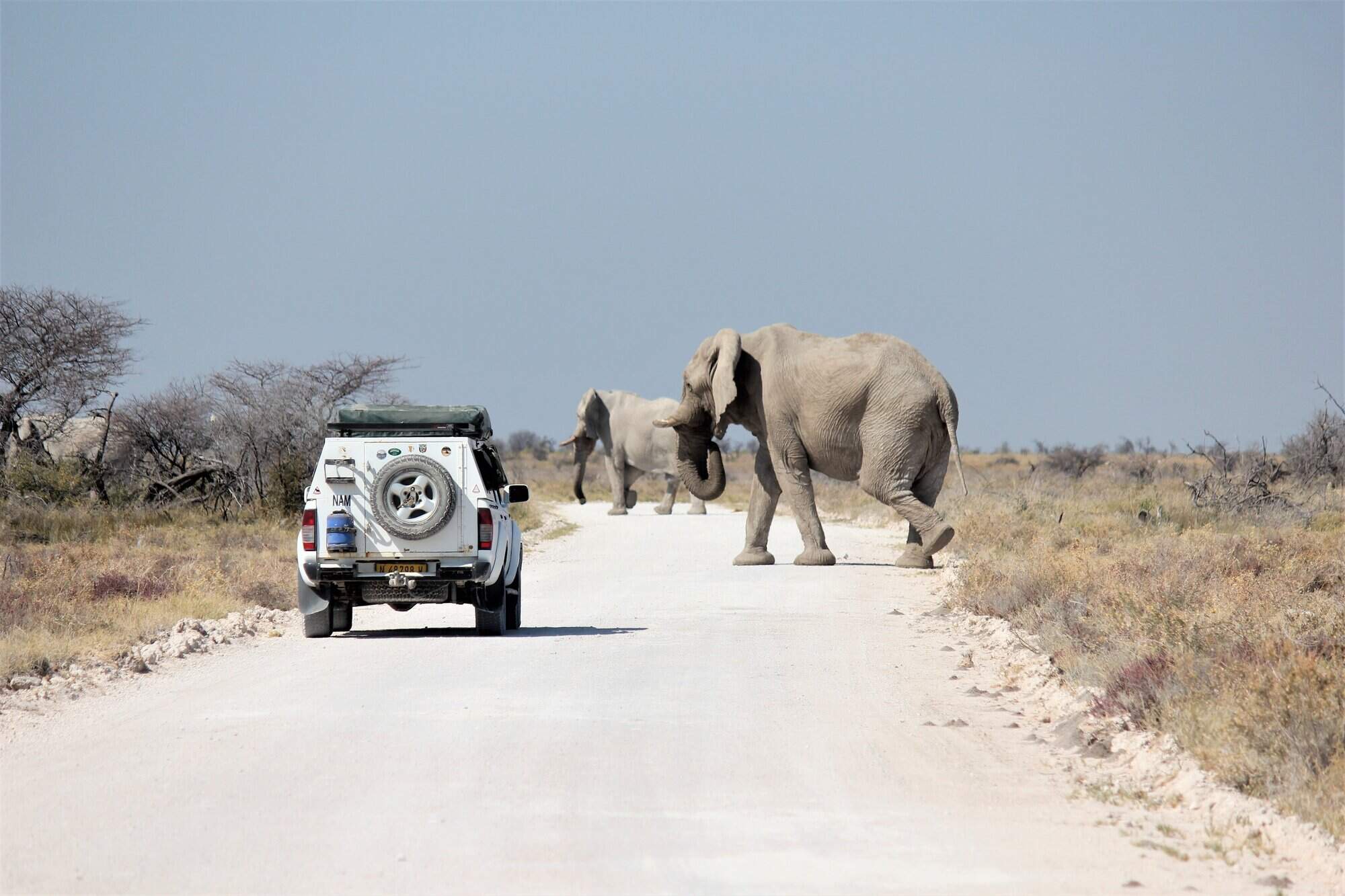
Okaukuejo Camp
Set within Etosha National Park, Okaukuejo Resort is a large camp with a productive, floodlit waterhole.
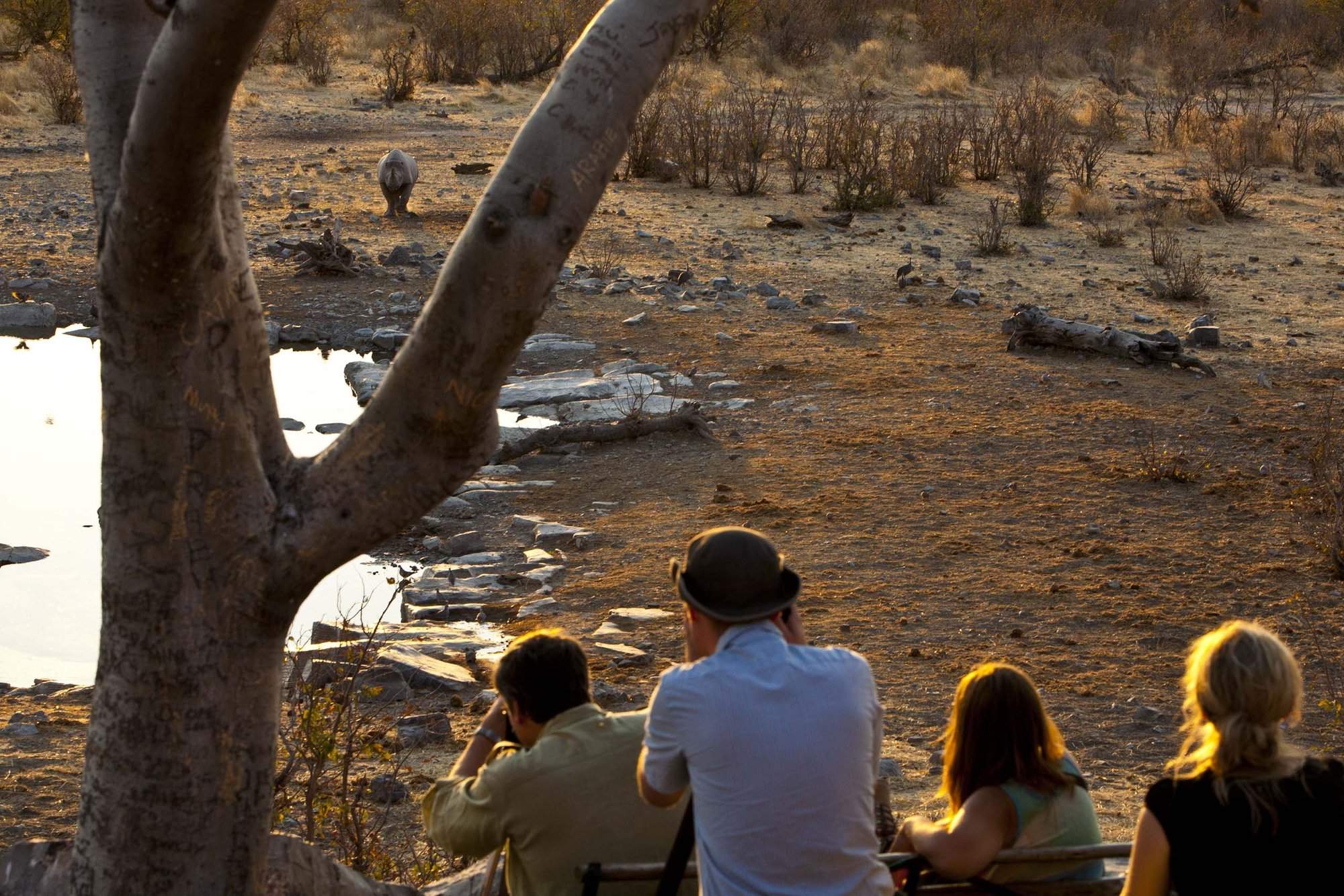
Halali Camp
The smallest of Etosha's erstwhile restcamps, overlooking its own floodlit waterhole, Halali has a superb location near the centre of Etosha Pan.
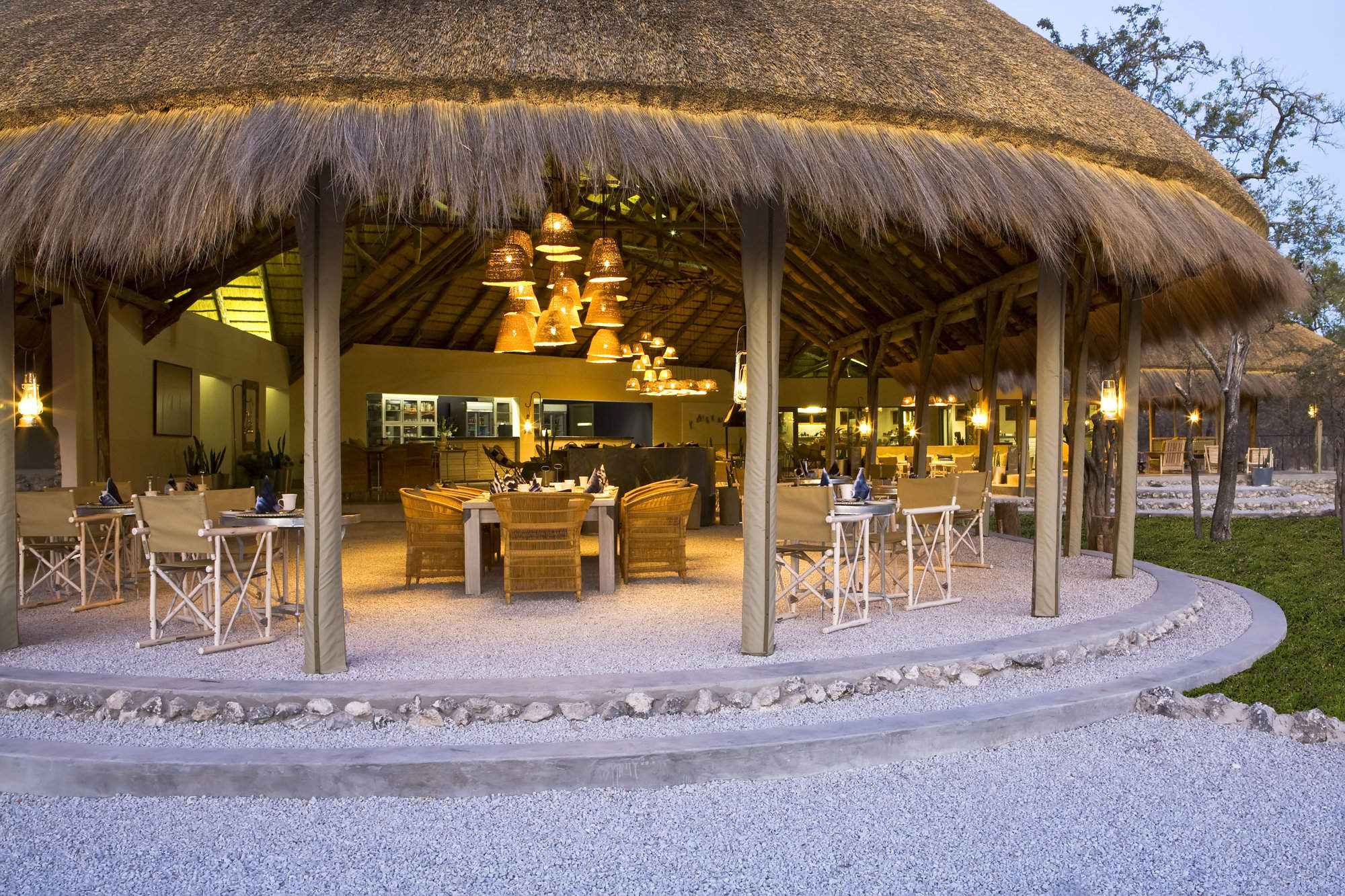
Mushara Bush Camp
The family-friendly Mushara Bush Camp offers great value and is an excellent base from which to explore Etosha National Park.
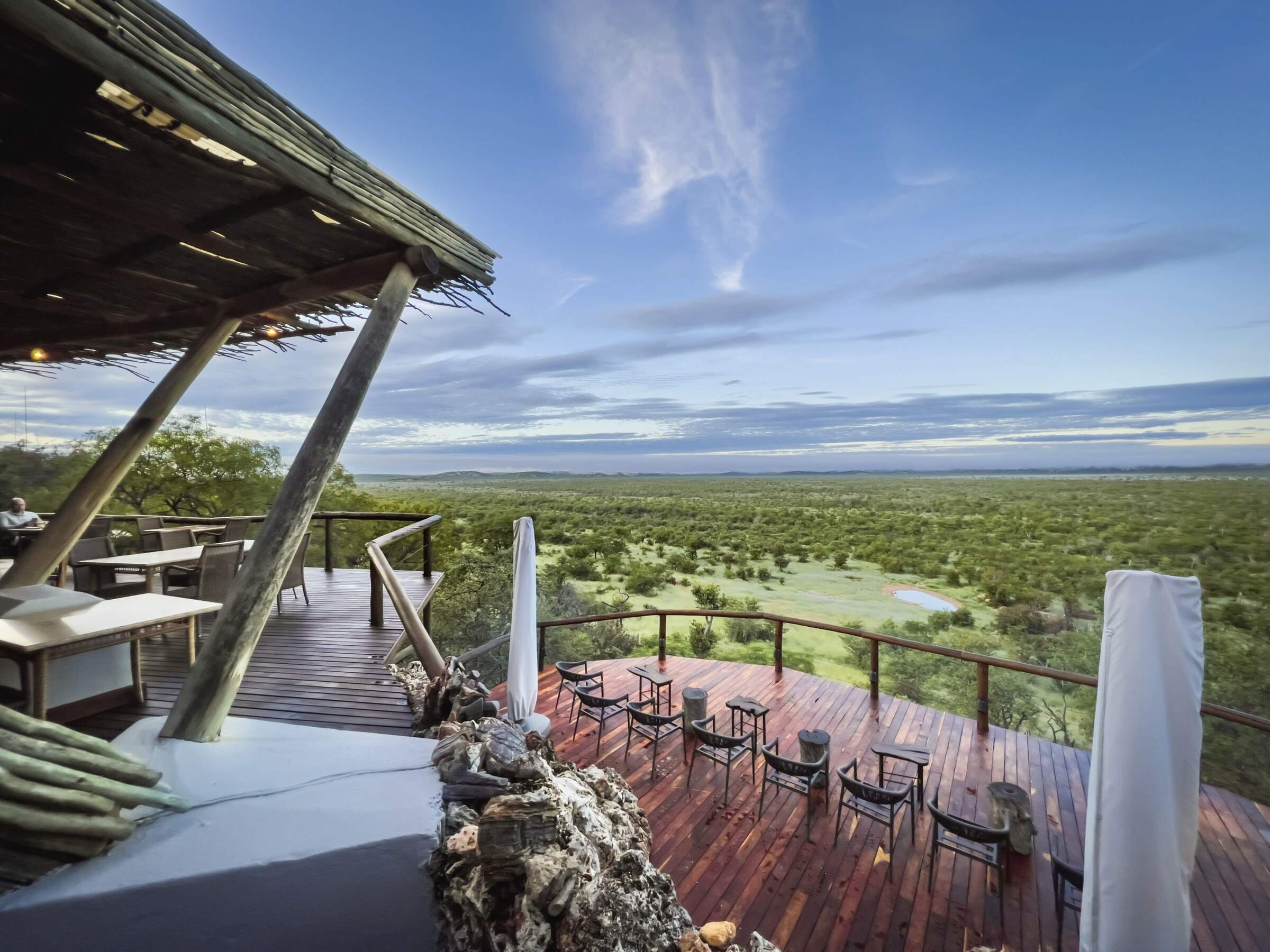
Ongava Lodge
With fantastic views over a private reserve bordering Etosha, the smart Ongava Lodge offers driving and walking safaris on the reserve, and guided drives in Etosha.
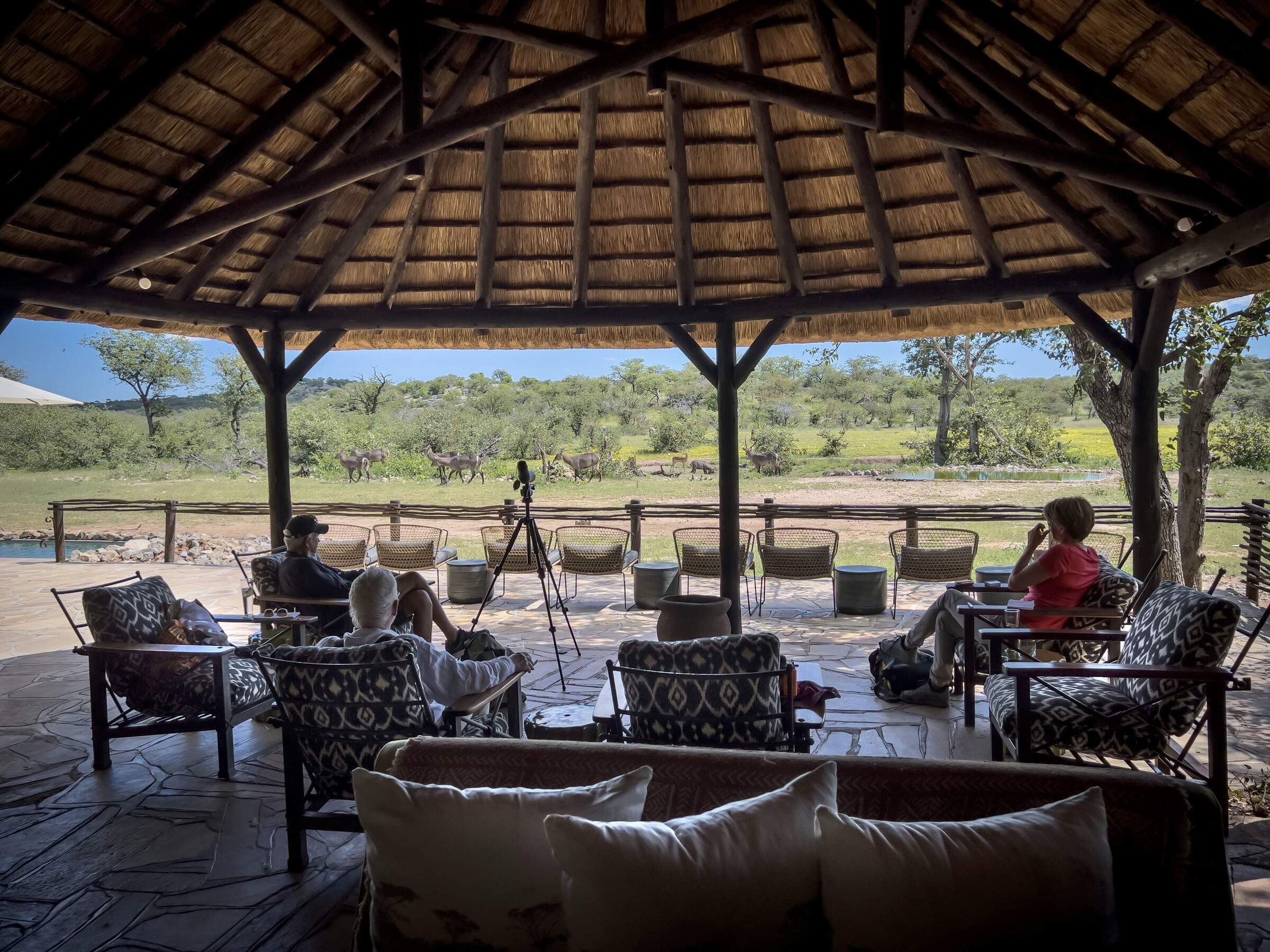
Ongava Tented Camp
Set around a waterhole on a private reserve, the small Ongava Tented Camp combines understated comfort with activities that include walks and night drives.
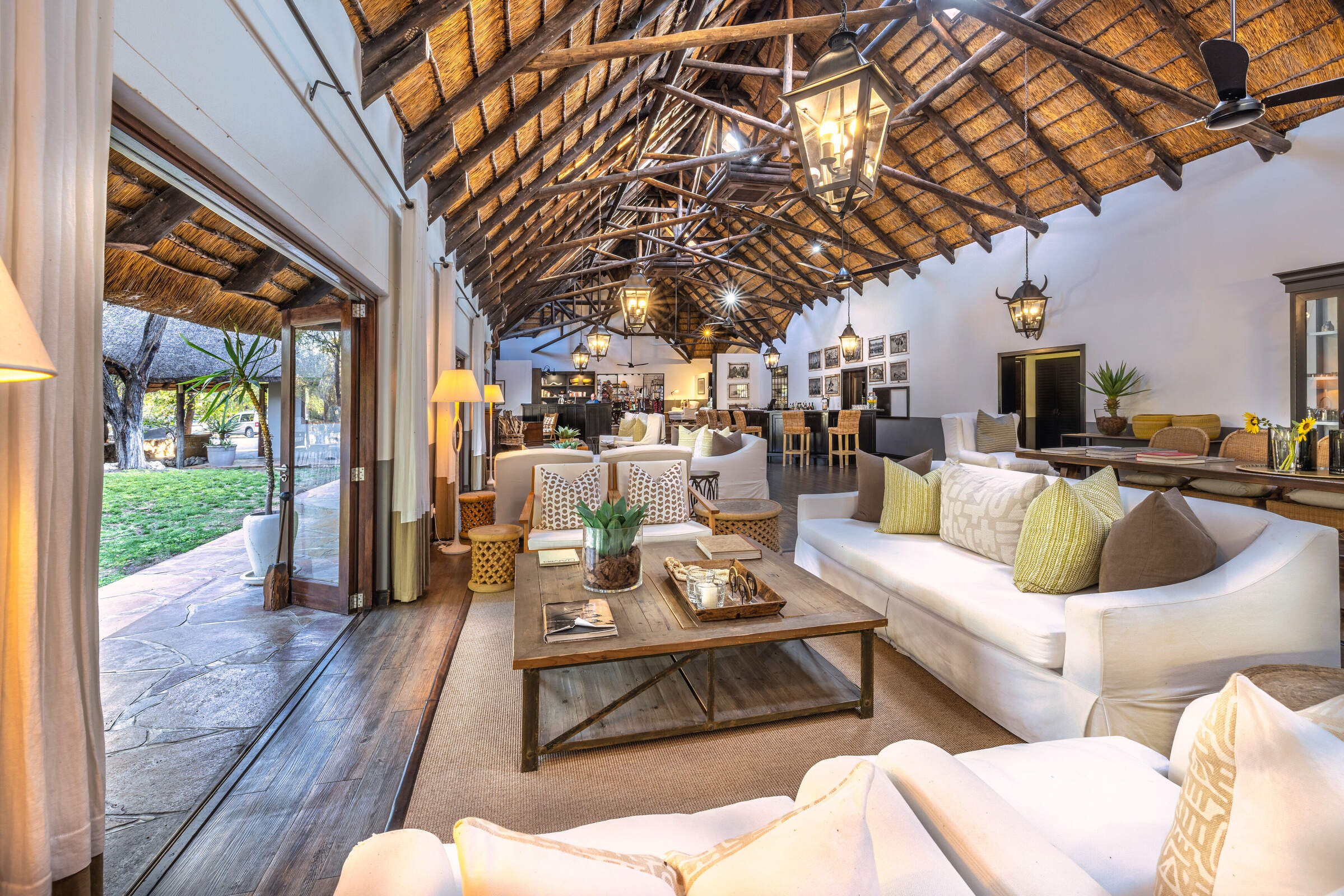
Mushara Lodge
Close to the eastern entrance to Etosha, the comfortable Mushara Lodge is well-placed for exploring the park in your own vehicle or on a guided drive.
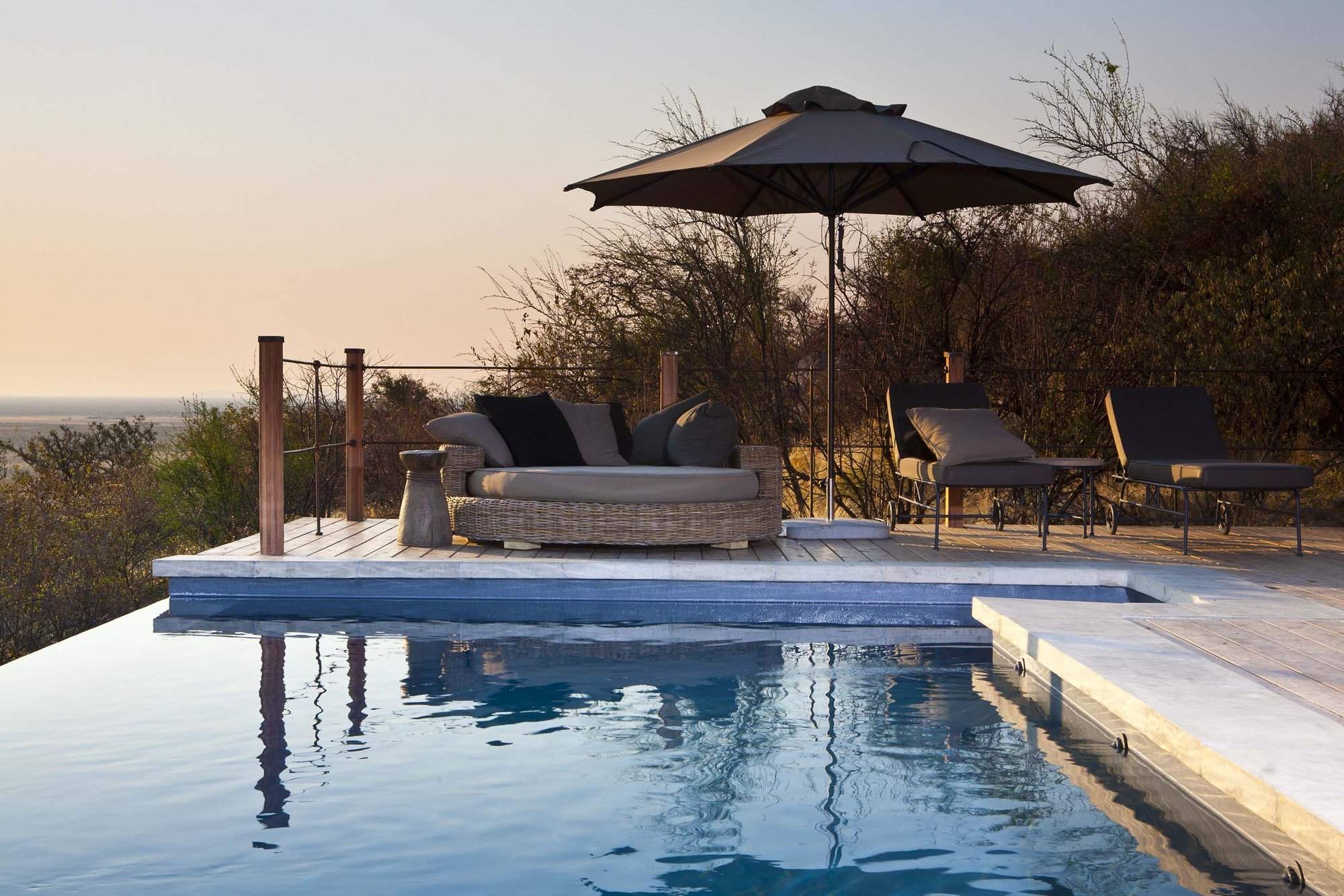
Dolomite Camp
Opened in 2011, Dolomite Camp allows visitors access to the far west side of Etosha National Park, which was previously off limits to most visitors.

Onguma Bush Camp
For great wildlife viewing without breaking the bank, the affordable and understated luxury of Onguma Bush Camp could be perfect.
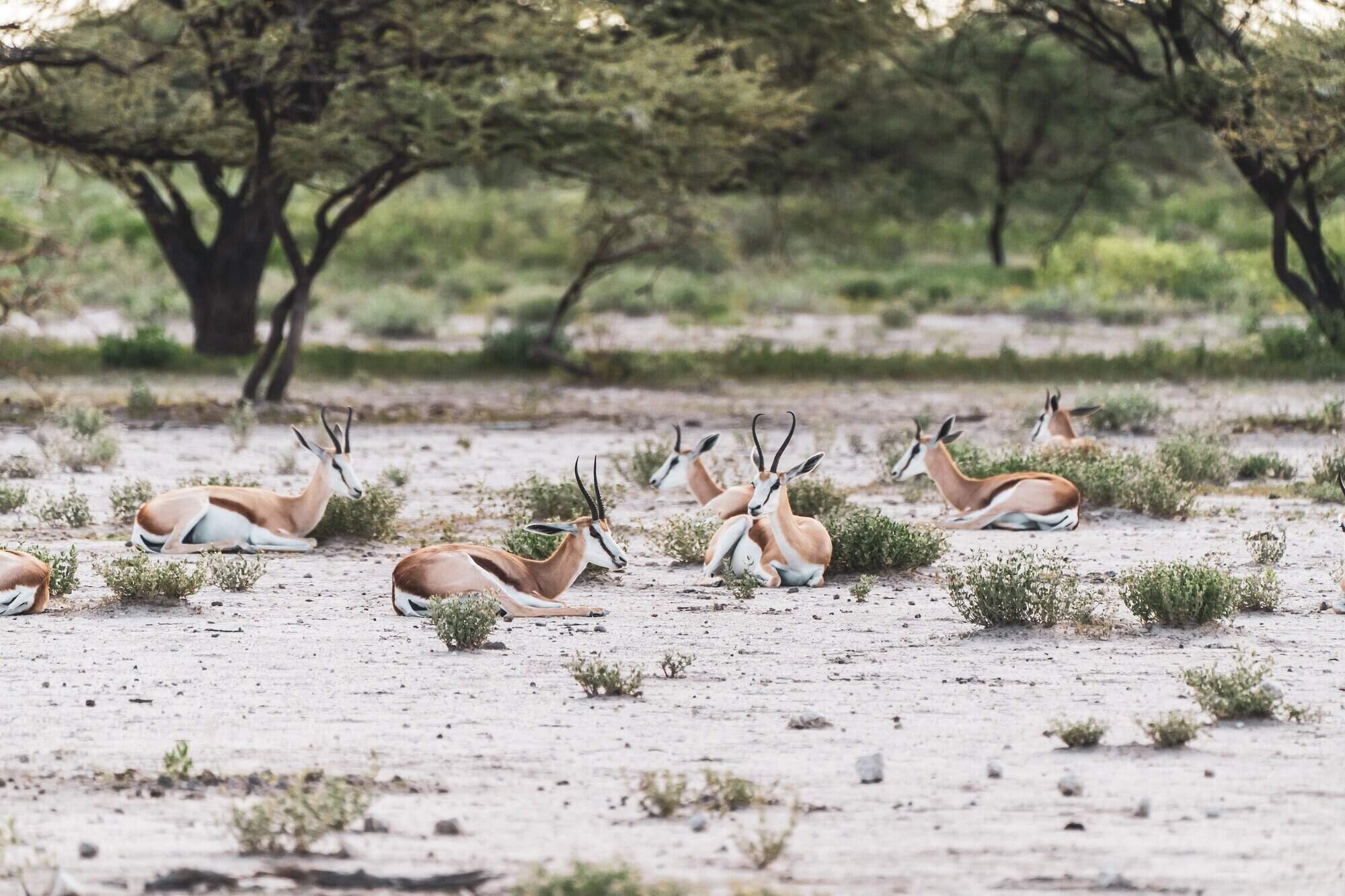
Namutoni Camp
Centred on an old fort, the government run Namutoni Camp is located just inside Etosha National Park, close to Fisher's Pan.
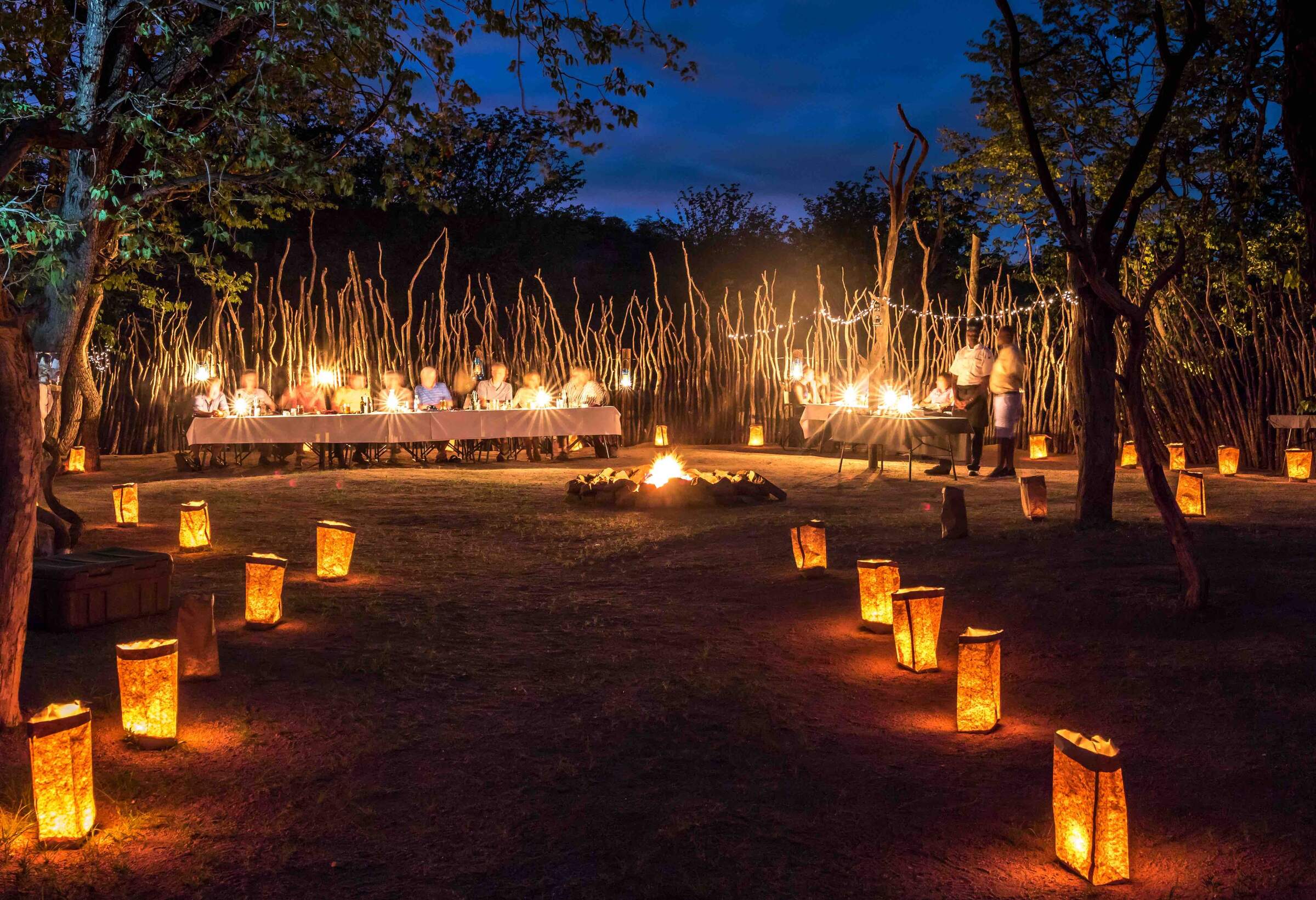
Hobatere Lodge
To the west of Etosha National Park, on the edge of Damaraland, Hobatere Lodge offers good game-viewing on its own reserve.
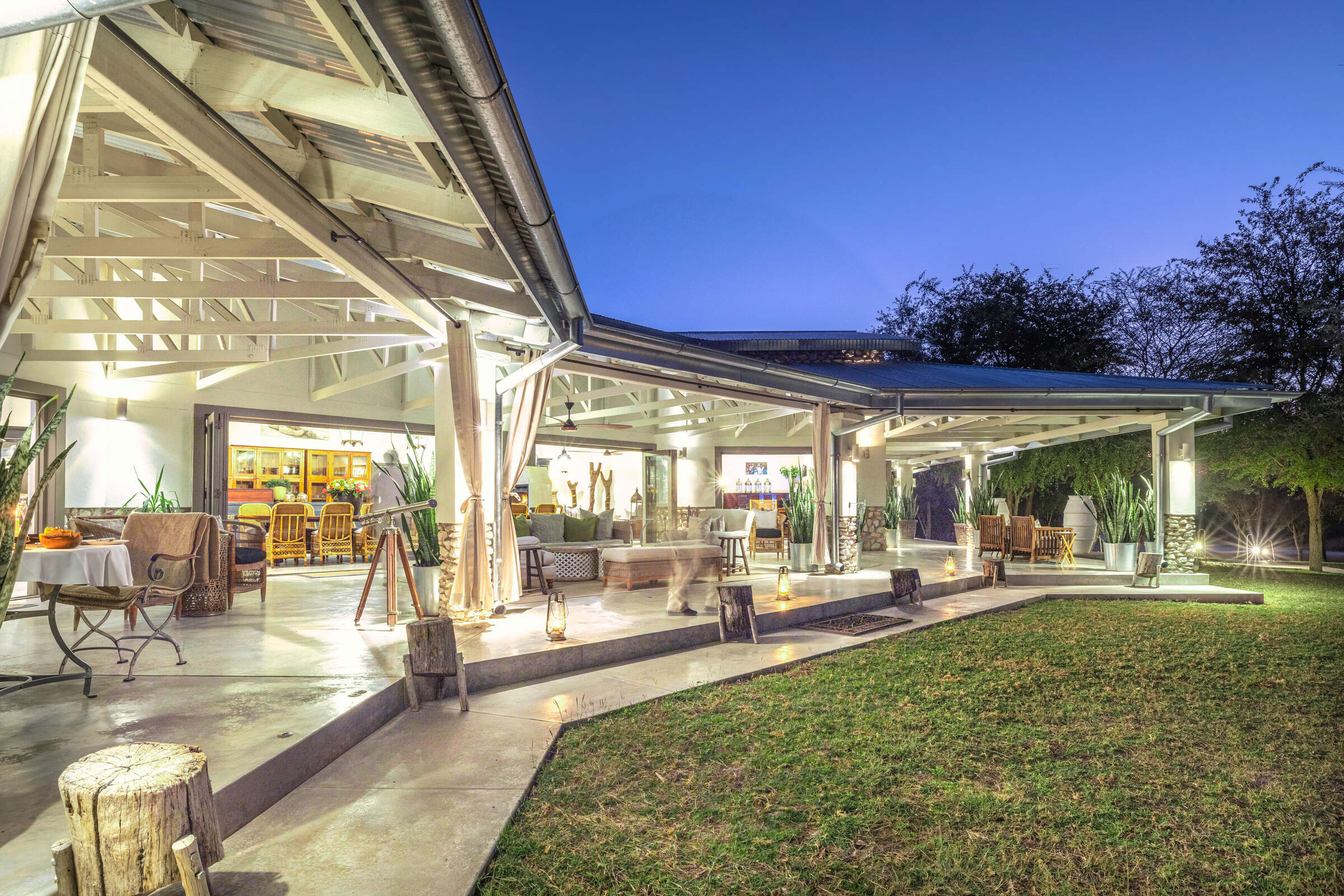
Mushara Outpost
Intimate and luxurious, Mushara Outpost is well-placed on a private reserve to explore nearby Etosha National Park on your own or on a guided drive.
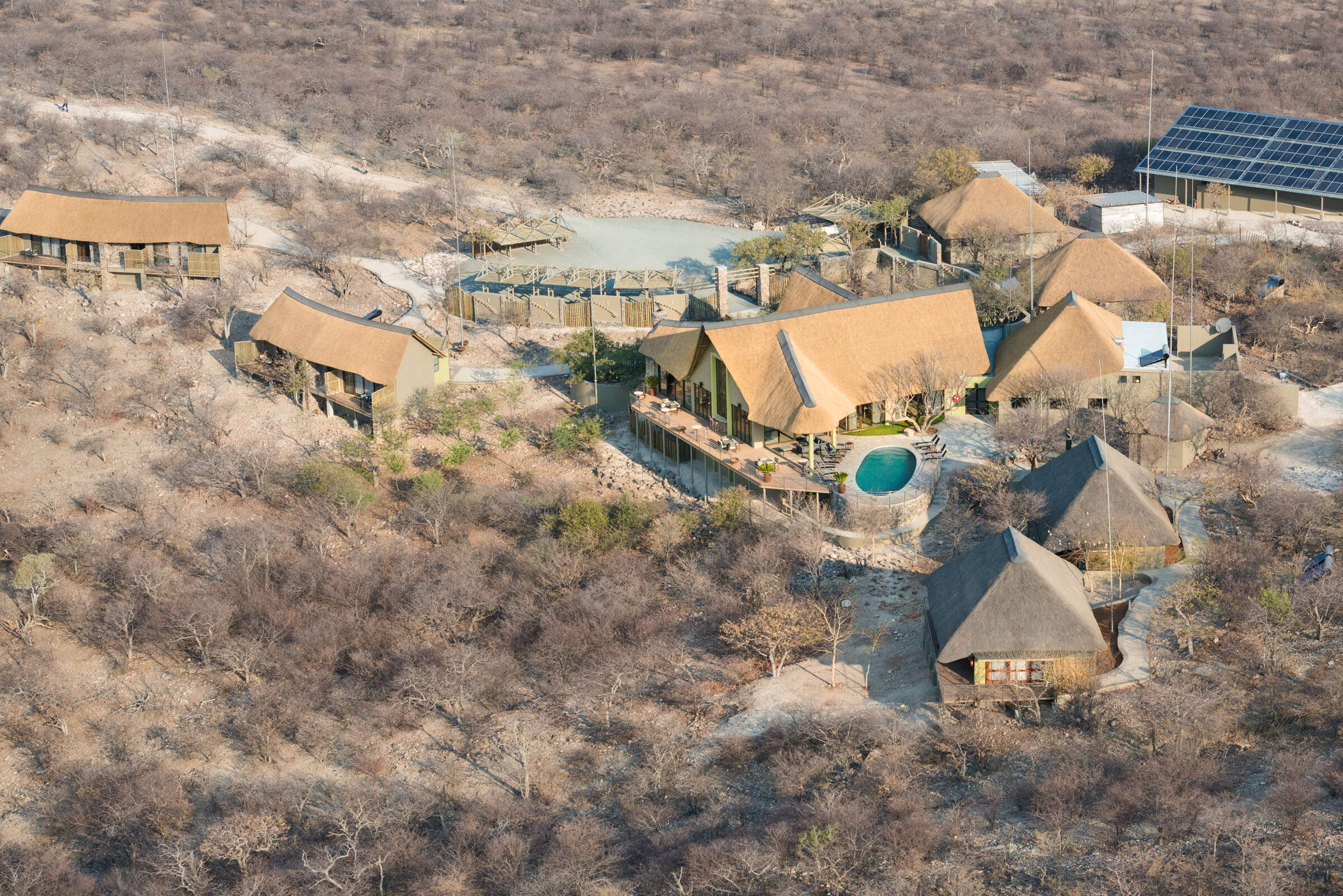
Safarihoek Lodge
At the heart of the private Etosha Heights Reserve, Safarihoek Lodge offers comfortable accommodation and excellent game-viewing.
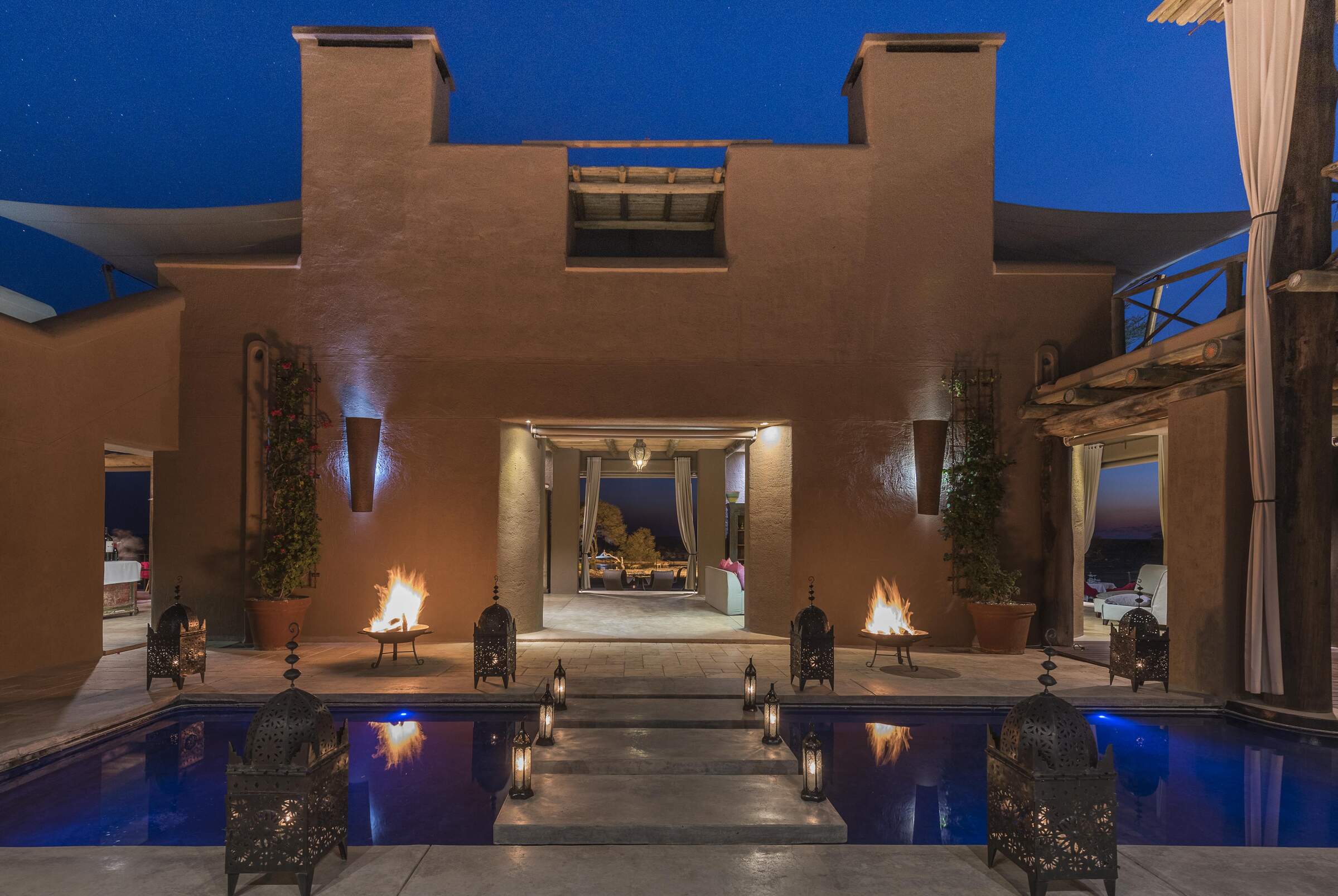
Onguma The Fort
The Fort is the jewel in the crown of the Onguma lodges, and arguably the whole of eastern Etosha.
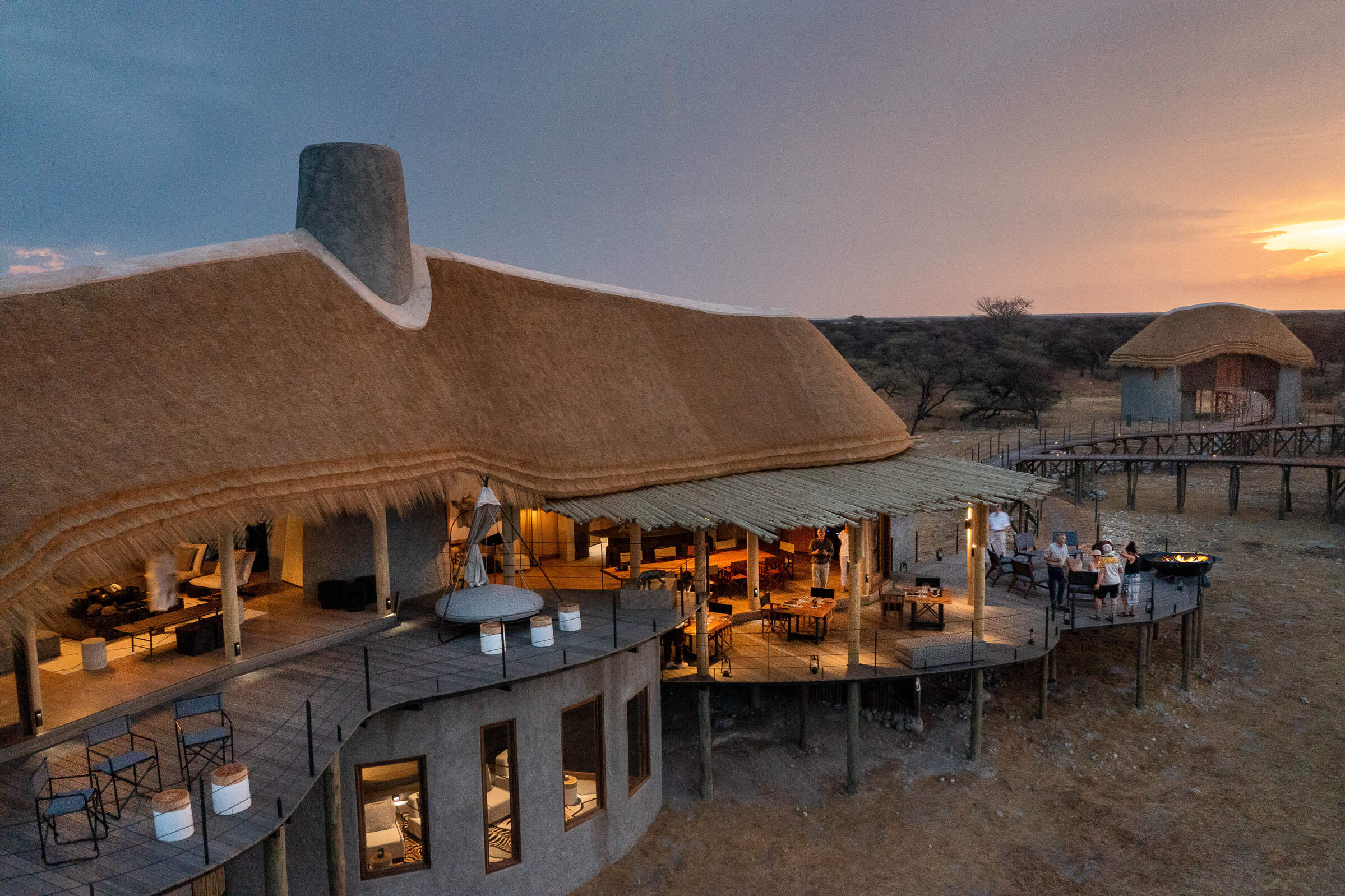
Onguma Camp Kala
For a bird’s eye view across African bush, the stilted rooms at Onguma Camp Kala are truly special.
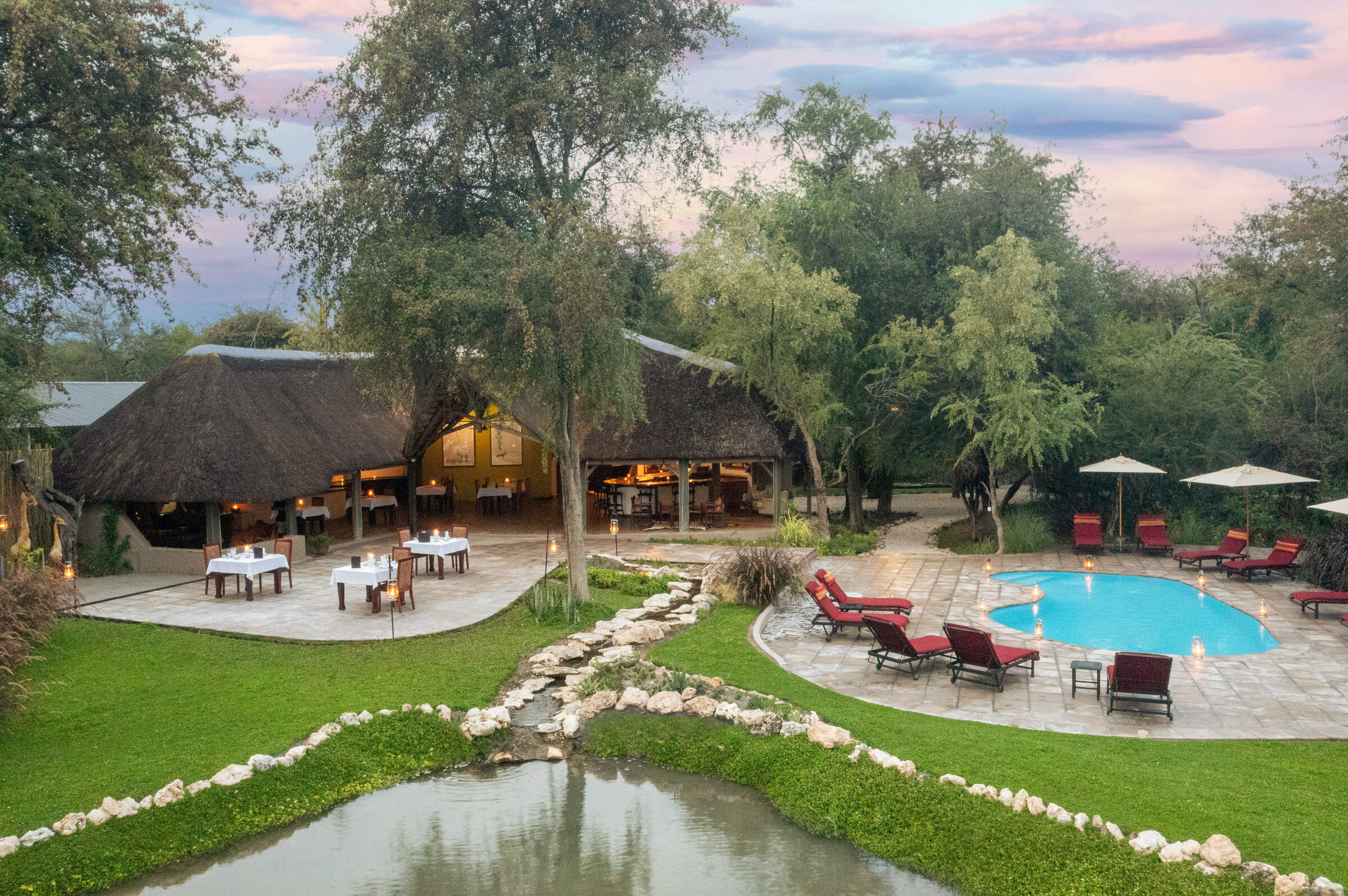
Onguma Forest Camp
From its woodland setting on the Onguma Reserve, Forest Camp is within easy striking distance of Namibia’s flagship national park.
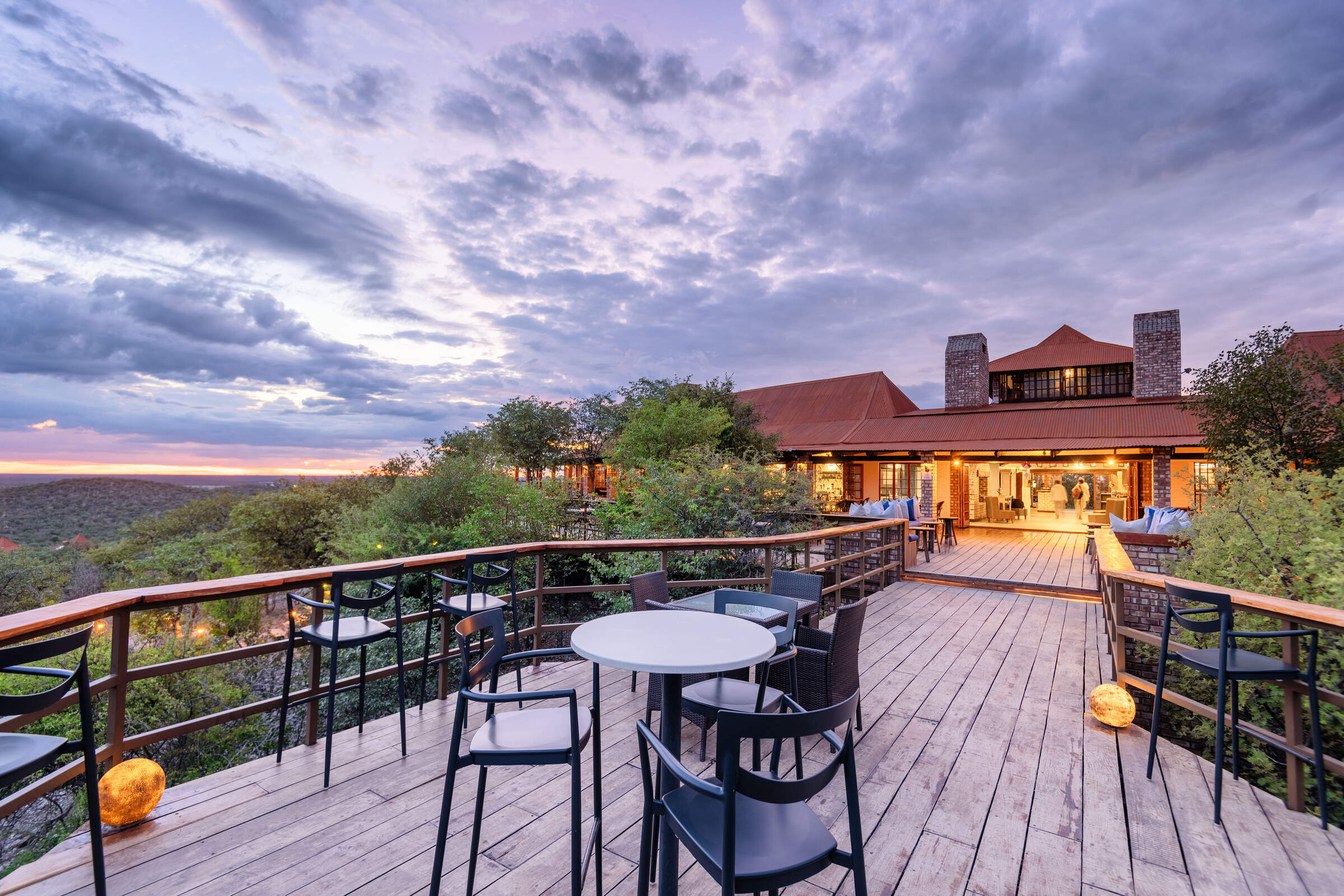
Etosha Safari Lodge
A short drive from Etosha National Park's southern entrance, Etosha Safari Lodge is a convenient base from which to explore the park.
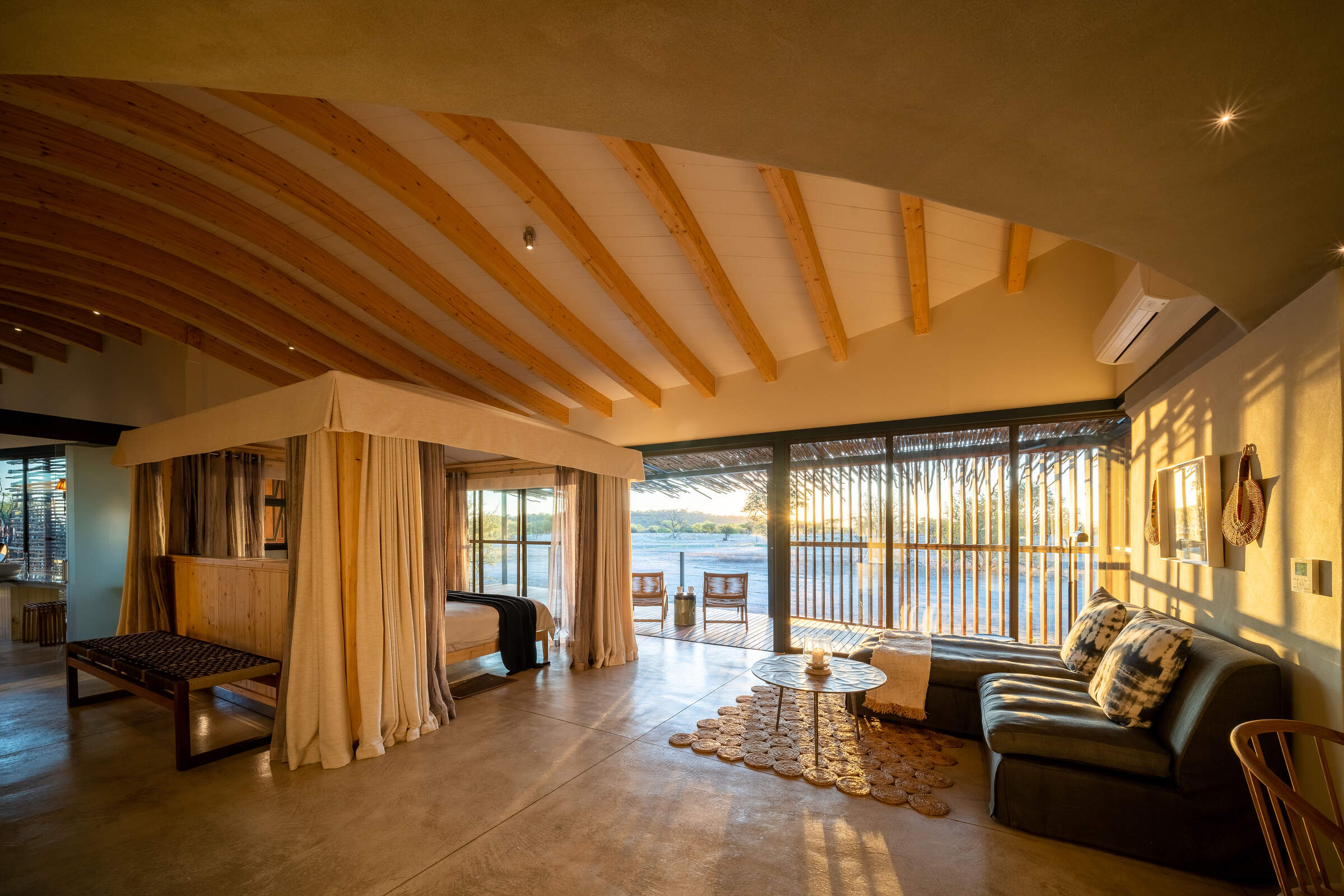
Andersson's at Ongava
With game drives on both its private reserve and in Etosha, Andersson's at Ongava also offers access to the Ongava Research Centre.
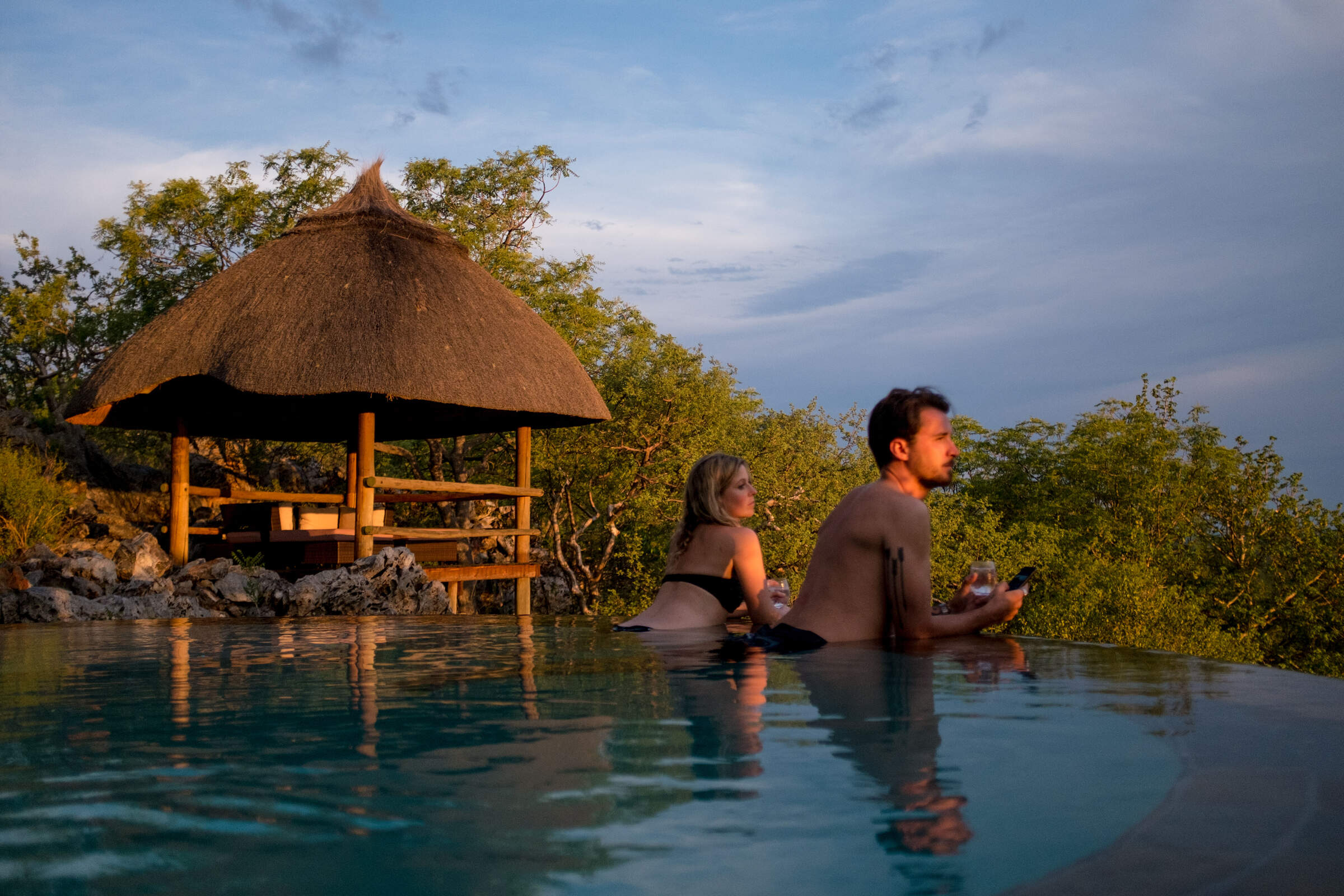
Little Ongava
The beautifully located and luxurious Little Ongava is a stunning place to stay in order to explore Etosha National Park and the private Ongava Reserve.
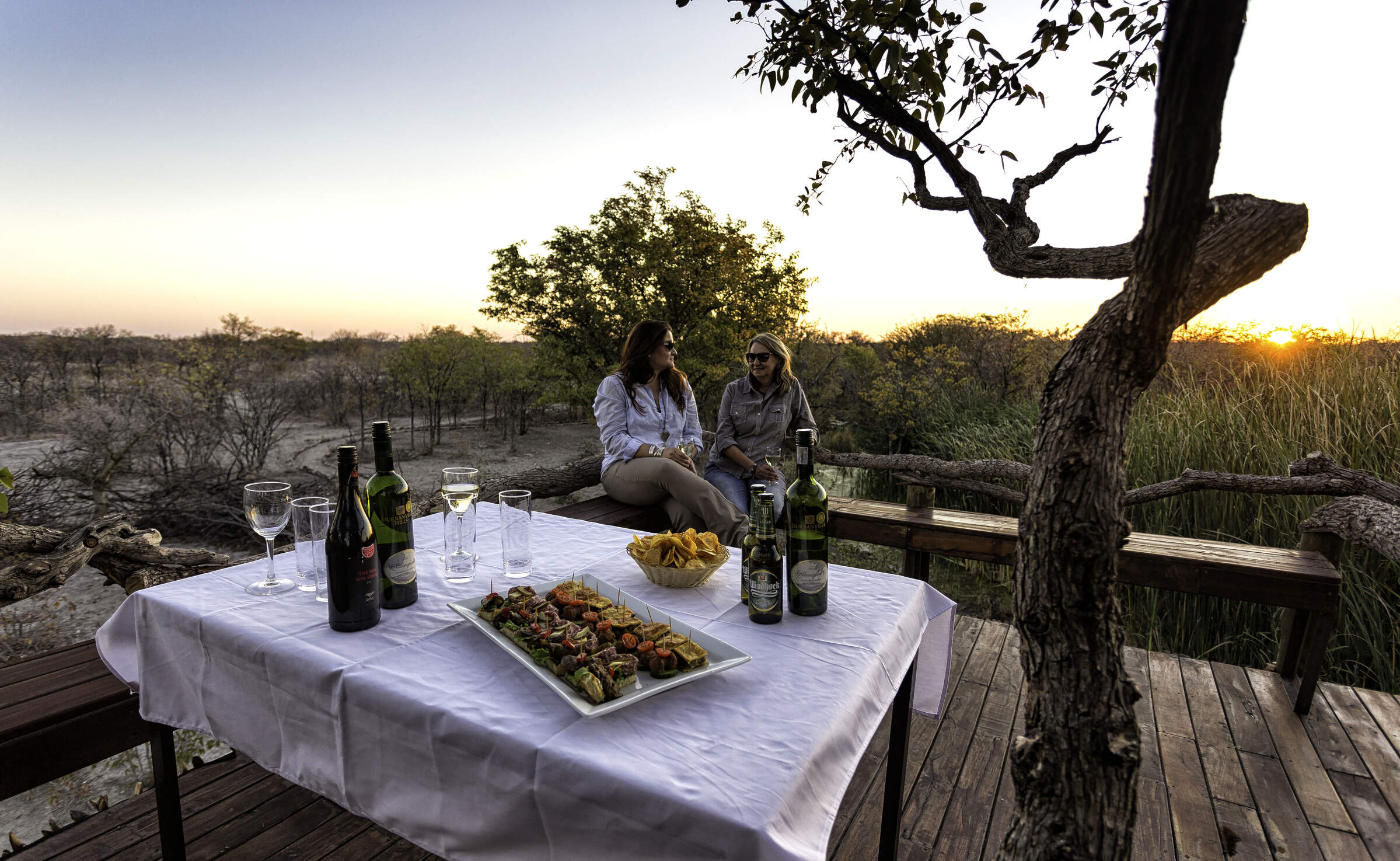
Taleni Etosha Village
Only 4km from Etosha's southern entrance, Taleni Etosha Village is an affordable base from which to explore the park.
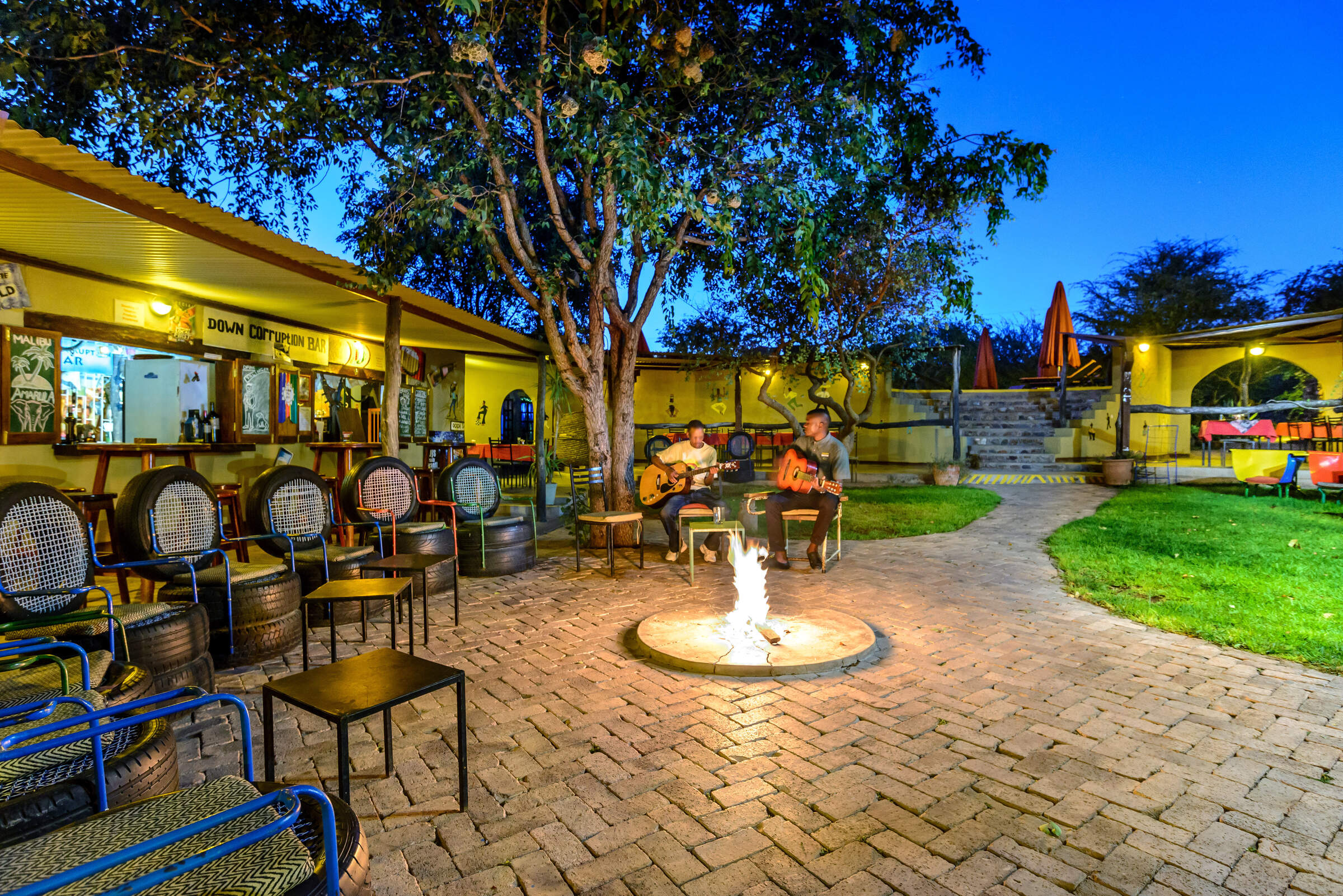
Etosha Safari Camp
Funky, low-key and very original, Etosha Safari Camp is well placed for visiting Etosha National Park on a self-drive or guided safari.
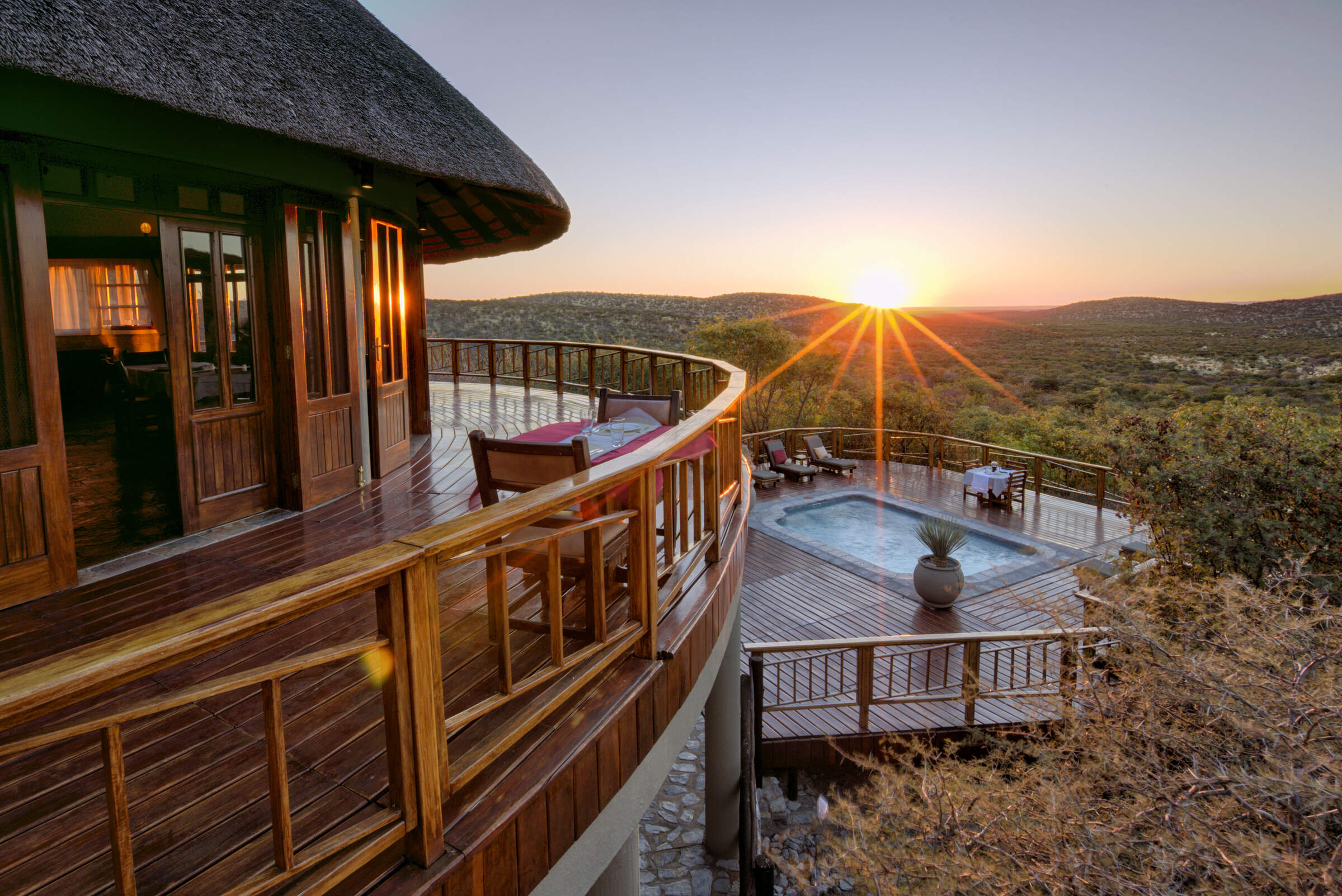
Mountain Lodge
In the heart of the private Etosha Heights Reserve, the family-friendly Mountain Lodge offers game drives and bush walks within an exclusive environment.
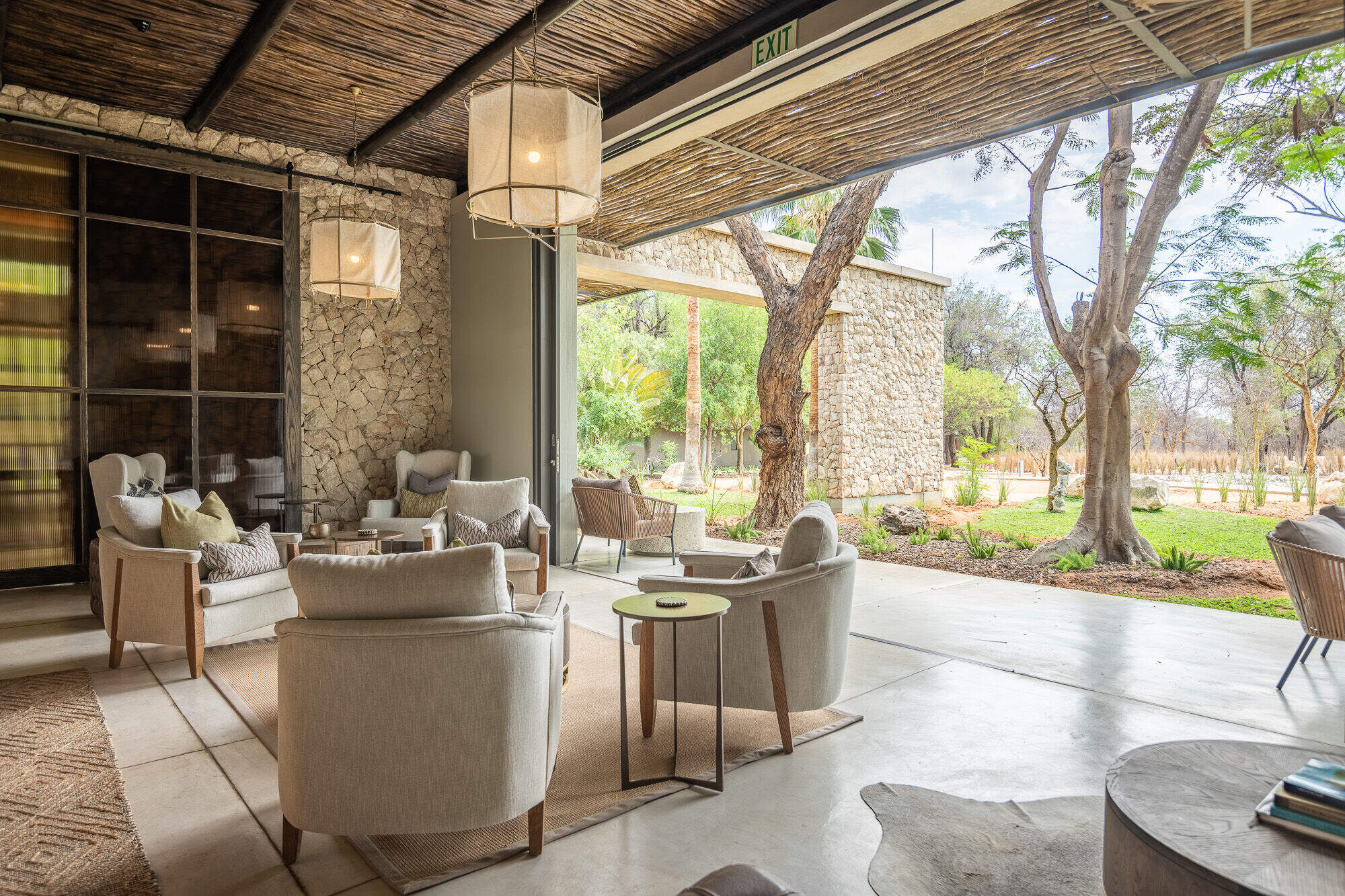
Mokuti Etosha Lodge
With 106 rooms, child-friendly Mokuti Etosha Lodge is more like a hotel than a lodge. Facilities to include a gym, spa, tennis courts and even a snake park.
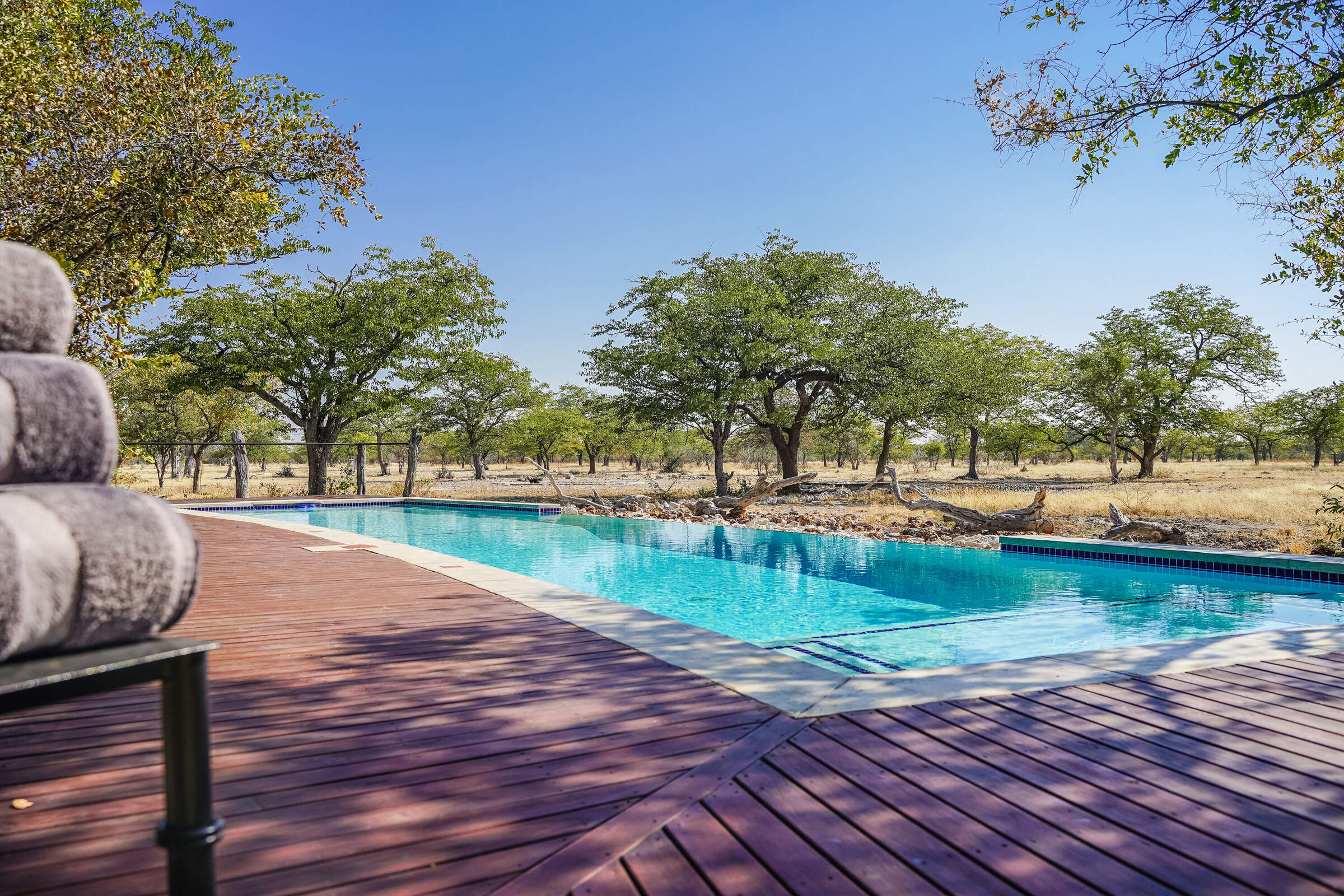
Etosha Oberland Lodge
A short drive from Etosha National Park's southern entrance, Etosha Oberland Lodge is a very comfortable base from which to explore the park, with excellent food.
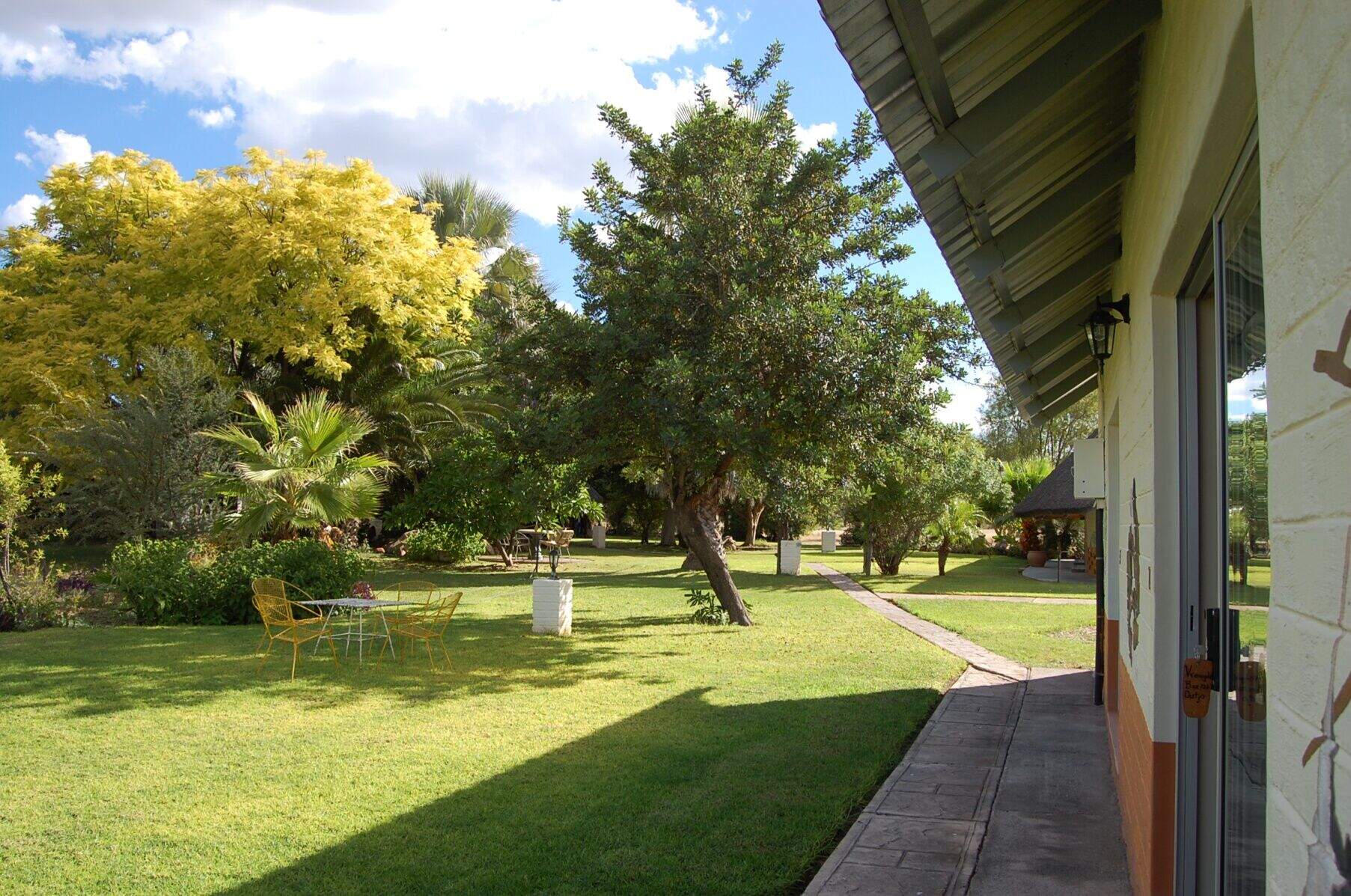
Vreugde Guest Farm
Vreugde Guest Farm is a delightful owner-run and working sheep farm where you can expect a warm welcome and charming hospitality.
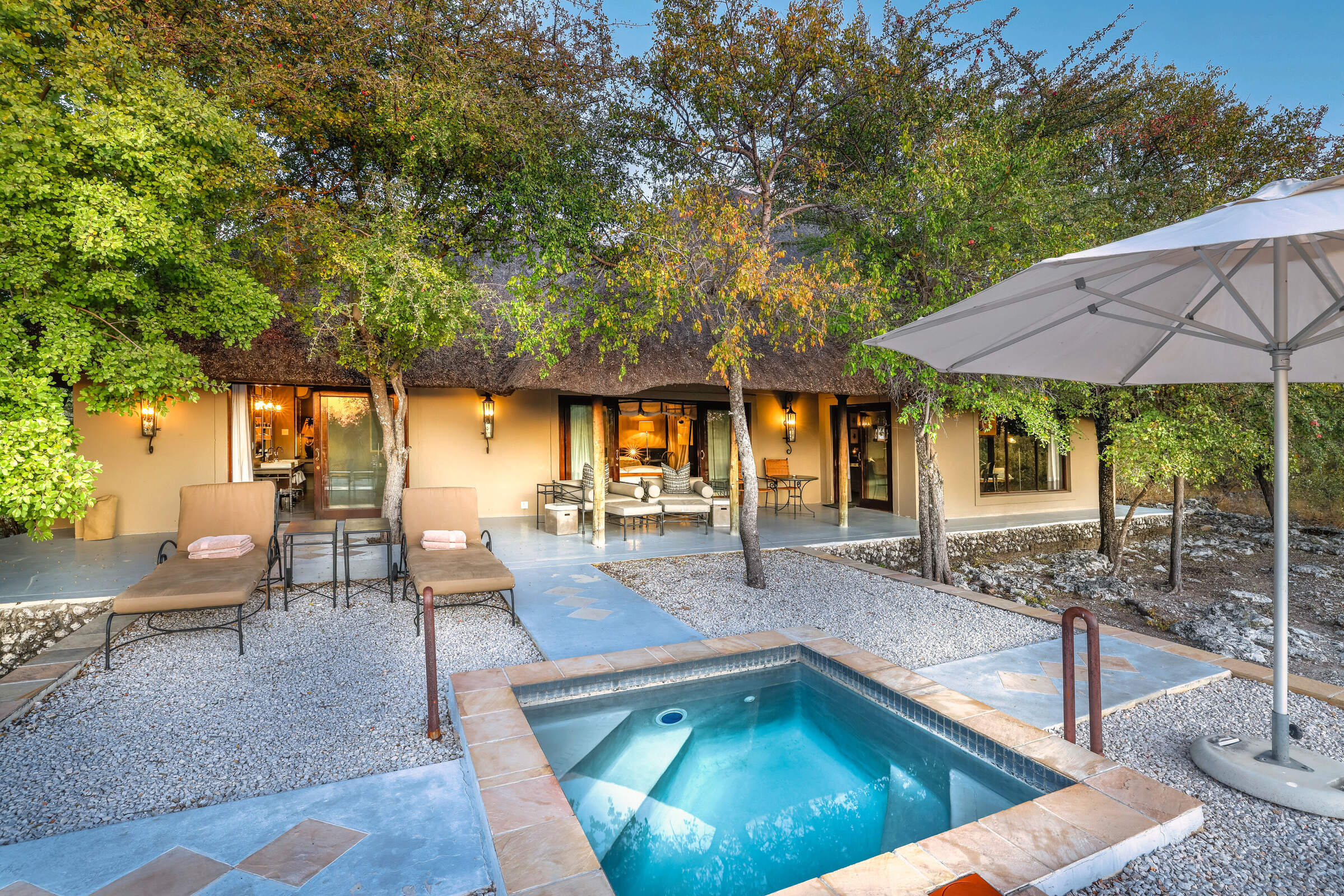
Villa Mushara
Offering luxury on a peaceful private reserve close to Etosha, Villa Mushara is a great choice for honeymooners & those wishing to indulge themselves.
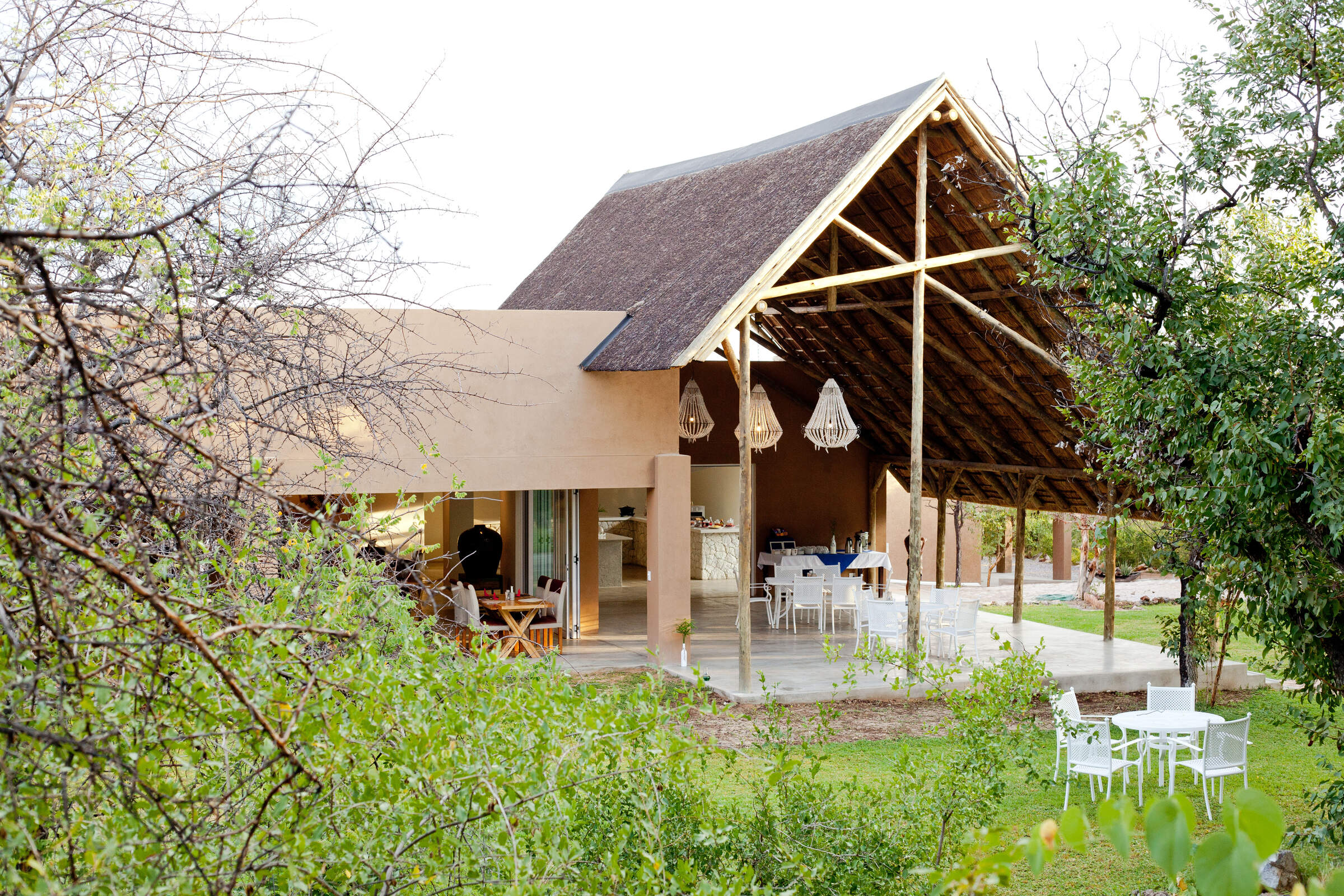
Toshari Lodge
Smart and professionally run, the hotel-style Toshari Lodge is well-placed for self-driving in Etosha National Park.
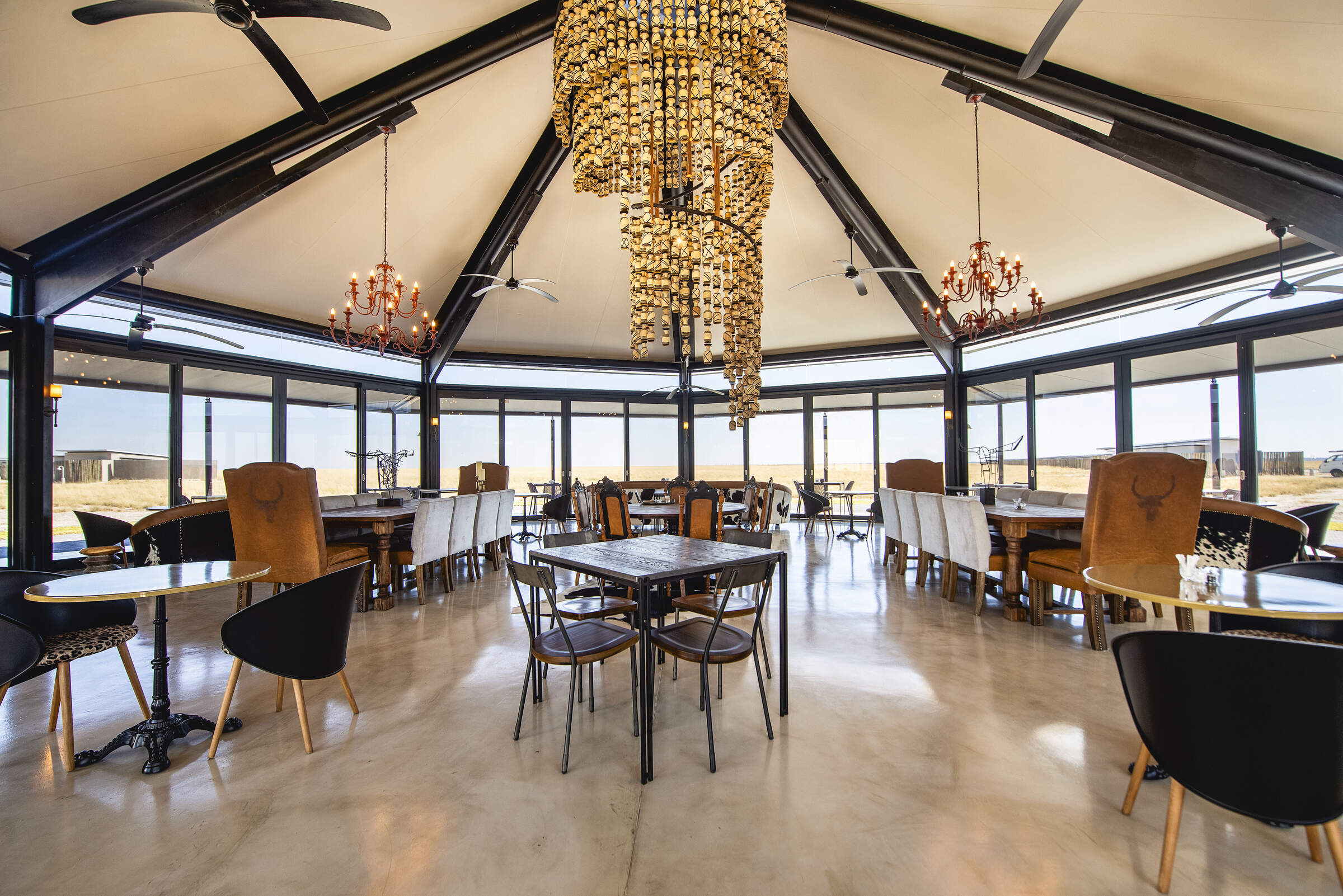
Etosha King Nehale
A short drive from the national park's northern entrance, Etosha King Nehale Lodge is an interesting and comfortable base from which to explore the park.
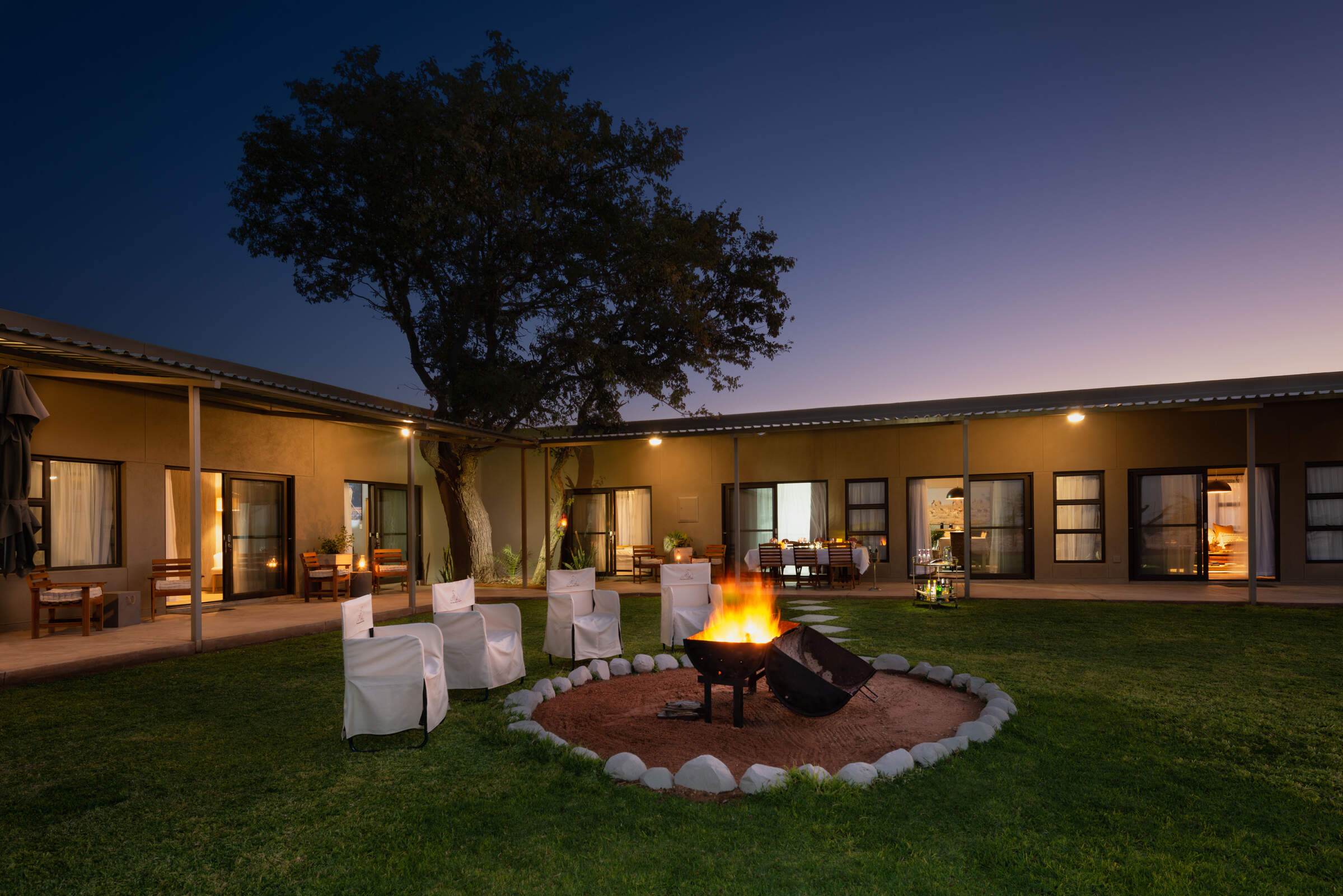
Safari House
The private Safari House on the Etosha Heights reserve is a great option families or friends travelling together.
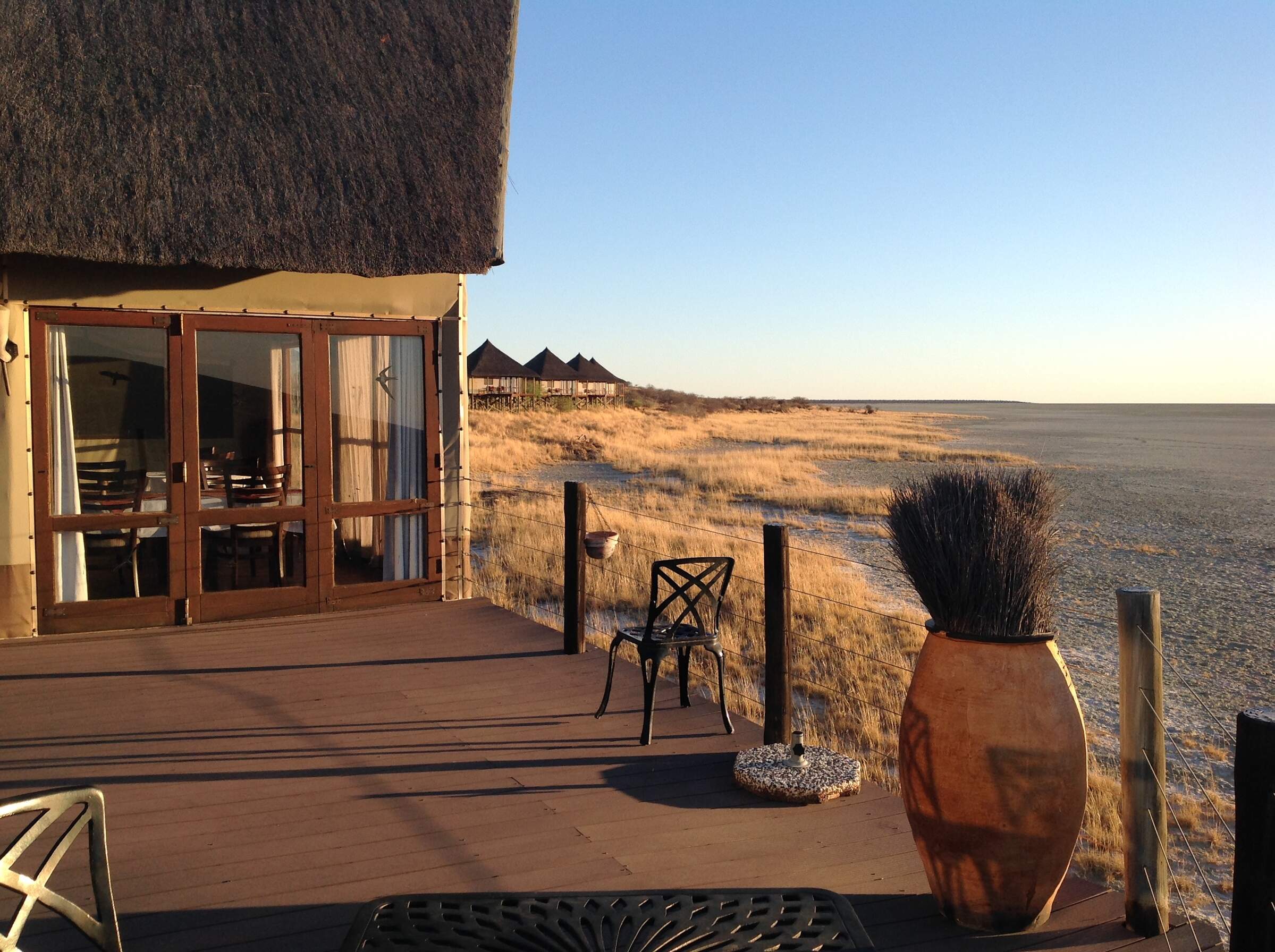
Onkoshi Camp
Onkoshi Camp is owned and run by Namibia Wildlife Resorts. Built on elevated wooden platforms it overlooks Etosha Pan.
When to go to Etosha National Park
Our month by month guide: What it's like to visit Onguma Tented Camp in Etosha National Park
Jan
Feb
Mar
Apr
May
Jun
Jul
Aug
Sep
Oct
Nov
Dec
Etosha National Park in January
January marks the start of Etosha's main rainy season. The Etosha Pan, usually a vast expanse of white clay, may partially fill with water in good rainy season, attracting flamingos and other migratory birds. The landscape transforms into a lush green oasis, providing ample food for wildlife. Many animals give birth during this time, offering chances to see newborns.
While game viewing can be challenging due to dispersed wildlife and thick vegetation, birdwatching is excellent. Migratory species arrive and birds display breeding plumage. The Okaukuejo and Halali waterholes remain active, though less crowded than in dry months. Visitors should be prepared for occasional thunderstorms and potentially muddy roads, especially around Fischer's Pan.
The vibrant greenery and the presence of young animals make this a fantastic time for photography.
- Variable weather: hot, dry or humid with rain
- Occasional localised thunderstorms in Etosha
- Many animals with young; spectacular birdlife
- Wildlife dispersed, harder to see in Etosha
- Fewer tourists; low rates at most lodges
Our view
This is not a great time to visit
Weather in January
Etosha National Park in February
February is typically Etosha's wettest month. The Etosha Pan may be partially filled, creating a spectacular sight and attracting numerous waterbirds, including flamingos. The landscape is vibrantly green, with many animals raising their young.
While game viewing can be more challenging due to the abundance of water and vegetation, patient observers can spot a variety of wildlife, and share their sightings with fewer other visitors. Birdwatching is excellent, with many species in breeding plumage. The Fairy Tale Forest near Okaukuejo is particularly lush during this time.
Visitors should be prepared for occasional thunderstorms and potentially challenging road conditions, especially in the eastern part of the park. The lush environment and the presence of young animals provide a unique opportunity to witness the park's life cycle.
- Variable weather with occasional thunderstorms
- Bush feels alive; birdlife at its peak in Etosha
- Wildlife in Etosha dispersed, harder to spot
- A variety of newborn and young wildlife to see
- Few tourists; lowest rates for accommodations
Our view
This is not a great time to visit
Weather in February
Etosha National Park in March
As Etosha's main rains taper off, March offers a mix of wet and dry days. The landscape remains green and alive, with insects and smaller animals more easily seen, and many birds and animals are finishing raising their young.
The Etosha Pan may still hold some water, attracting flamingos and other waterbirds. Game viewing improves as the month progresses and animals start to herd together at permanent water sources. The Okaukuejo, Halali, and Namutoni waterholes become increasingly active.
Birdwatching remains excellent, with many migrant species still around. The Dolomite Camp area in the west offers good chances to spot rarer antelope species like black-faced impala.
The transition from wet to dry conditions provides a fascinating glimpse into the park's seasonal changes.
- Weather variable; thunderstorms less frequent
- Animals well-fed after months of abundance
- Wildlife in Etosha still dispersed, harder to see
- Migrant birds prepare to leave the park
- Few visitors; rates often low at Etosha lodges
Our view
A good time to visit, with pros & cons
Weather in March
Etosha National Park in April
April typically sees dry weather dominating in Etosha, with decreasing chances of rain. The landscape remains relatively green, and animals are in excellent condition with shiny coats. Increasing numbers of elephants seen as the herds begin to use the permanent water sources. The Okaukuejo waterhole becomes particularly active, especially in the evenings.
Photographers benefit from clear air and lush, green backdrop. Night drives from camps like Halali offer chances to see nocturnal animals. Birdwatching remains good, though some migratory species begin to depart, and the Fischer's Pan area can still be productive for waterbirds if there's residual water from the rainy season.
The shift towards drier conditions improves the chances of wildlife sightings.
- Becoming drier and cooler, especially at night
- Few visitors except around Easter; low rates
- Wildlife in Etosha still relatively spread out
- Migrant birds have largely left the park
- Fresh air and often green landscapes in Etosha
Our view
A good time to visit, with pros & cons
Weather in April
Etosha National Park in May
May marks the transition to Etosha's dry season. The landscape starts to dry out, but may still retain some greenery. Wildlife increasingly gathers around permanent water sources, making game viewing more predictable. The Okaukuejo, Halali, and Namutoni waterholes become excellent spots for animal observation – especially when floodlit after dark. Night drives offer opportunities to see nocturnal species like leopards and owls.
The Etosha Pan is usually dry, creating a stark, shimmering backdrop for photography. Birdwatching remains good, with 340 different species recorded in the park. The western part of the park, accessible from Dolomite Camp, offers chances to see rarer species like black rhino in a less frequently explored environment. The dry season's onset brings a new rhythm to the park's wildlife dynamics.
- Lovely weather: dry, warm days & cool nights
- Etosha drying out; landscapes still partly green
- Fantastic air clarity; ideal for photography
- Visitor numbers low; lodge rates still low
- Wildlife starting to gather at Etosha waterholes
Our view
A very good time to visit
Weather in May
Etosha National Park in June
June brings cooler temperatures with clear skies to Etosha. The landscape is drying out, encouraging animals like elephants, rhino and giraffe to waterholes. This makes for excellent game viewing, especially at popular spots like Okaukuejo and Halali. Night drives on private Etosha reserves, like Ongava, are particularly productive.
The dry Etosha Pan creates mirages and a unique backdrop for photography, perhaps a lone ostrich crossing the stark salt crust. Birdwatching remains rewarding, with bright colours standing out in drier vegetation. The Namutoni area, with its fort, provides a mix of wildlife viewing and historical interest.
Cooler temperatures making walking safaris enjoyable in Etosha’s adjacent wildlife reserves, like Etosha Heights.
- Clear days, cold nights in Etosha National Park
- Great air quality; perfect for photographers
- Moderate lodge rates; shoulder season begins
- Wildlife gravitates to Etosha's waterholes
- Some greenery remains in parts of the park
Our view
A very good time to visit
Weather in June
Etosha National Park in July
July is prime time for wildlife viewing in Etosha as animals, in particular predators, are more active later in cool mornings and earlier in the afternoons. The dry landscape concentrates animals around waterholes, making for predictable and spectacular sightings. The Okaukuejo waterhole is particularly active, especially at night when black rhinos often visit and jostle for position with elephants.
The stark white Etosha Pan creates a unique backdrop for photography, with heat mirages shimmering on the horizon.
The dry season's peak offers unparalleled wildlife viewing opportunities. Game drives along the southern edge of the pan offer excellent opportunities to see large herds of zebra, wildebeest, and antelope. Birdwatching is rewarding around waterholes, with species like eagles and vultures frequently sighted.
- Dry days, crisp nights; excellent for stargazing
- European holidays begin; more families visit
- Peak season; high rates, lodges often full
- Fantastic wildlife watching
- Animals concentrate around Etosha waterholes
Our view
A very good time to visit
Weather in July
Etosha National Park in August
August is the height of the dry season in Etosha, offering excellent wildlife viewing opportunities. Animals concentrate around waterholes, with a variety of predators and prey often seen at any one time. Night viewing at the more secluded yet floodlit waterhole at Halali is often rewarded with sightings of shyer leopard and porcupine.
The dry season's intensity brings wildlife into sharp focus. The open plains along the edge of the Etosha Pan are good for seeing large herds of zebra and wildebeest, and often cheetah too. Predators often lie in wait for their prey near waterholes offering sightings of hunts to patient game viewers.
Birdwatching remains rewarding, with raptors like bateleur and martial eagles frequently sighted.
- Dry days, cold nights; clear skies in Etosha
- Busy by Namibian standards; family rooms full
- Peak season; high rates, advanced booking needed
- Excellent wildlife viewing in Etosha National Park
- Large herds gather at Etosha's waterholes
Our view
Fantastic: the very best time to visit
Weather in August
Etosha National Park in September
September offers peak wildlife viewing in Etosha. The extreme dry conditions concentrate animals around waterholes, making for spectacular sightings of multiple species. The Okaukuejo waterhole is particularly active, with elephants, rhinos, and lions frequently visiting.
The last months of the dry season showcases the park's wildlife at its most concentrated. The stark landscape of the dry Etosha Pan creates dramatic backdrops for photography. Game drives along the pan's edge offer chances to see large herds of zebra, springbok, and oryx as well as lion prides and cheetah. The western part of the park, accessible from Dolomite Camp, often provides a more exclusive safari experience with good rhino sightings. Night drives on adjacent private reserves like Hobatere offer opportunities to see nocturnal animals such as genets and aardwolves.
Birdwatching is excellent, with species standing out clearly in the sparse vegetation.
- One of the best months for Etosha wildlife viewing
- Warm days, cold nights; temperatures rising
- Colourful birds stand out against a starker backdrop
- Etosha's waterholes teem with diverse wildlife
- High season; book Etosha accommodations early
Our view
Fantastic: the very best time to visit
Weather in September
Etosha National Park in October
October is typically Etosha's hottest and driest month, offering excellent wildlife viewing. The intense heat and dry conditions heighten the drama of wildlife interactions.
Animals concentrate heavily around waterholes, with spectacular sightings common at Okaukuejo, Halali, and other permanent water sources. Patient photographers spending time at waterholes are richly rewarded. Large herds of zebra, wildebeest, and various antelope species can be seen along the pan's southern edge. Predator sightings, including lions and cheetahs, are frequent as they target gathered and weakened prey. Thinning vegetation at Namutoni makes it easier to spot the dimunitive Damara dik dik – Namibia’s smallest antelope.
Birdwatching remains rewarding, with raptors and colourful rollers often spotted.
- Peak wildlife-viewing month in Etosha National Park
- Hot and dry; Etosha feels like a desert
- Air can be hazy with dust in some areas
- Peak time; expect high season rates in Etosha
- Etosha lodges often full, especially early October
Our view
A very good time to visit
Weather in October
Etosha National Park in November
November marks the transition to Etosha's rainy season, bringing change to the landscape and wildlife behaviour. Early rains may green the vegetation, dispersing some wildlife from waterholes. However, game viewing remains good, especially around permanent water sources like Okaukuejo and Halali’s floodlit waterholes.
The first rains can create dramatic scenes as animals celebrate the water's arrival, with plains game often giving birth. Predators often give birth at this time too, to coincide with the time of plenty. Migratory birds begin to return, and birds take to the skies in spectacular aerial shows as they catch more active insects.
Seasonal wildflowers and dramatic, thundery skies add interest to photographic compositions. Summer rains bring reptiles such as tortoises and chameleons out into the open. The onset of rains brings a refreshing change to the park's ecosystem.
- Variable month in Etosha, depending on rains
- If rain comes, explosion of vegetation and life
- Baby animals often born around mid-month
- Shoulder season; mid-range rates offer value
- Showers more likely later in the month in Etosha
Our view
A good time to visit, with pros & cons
Weather in November
Etosha National Park in December
December is often a drier month before January sees the main rainy season begin. The landscape begins to show green from November's rain and the odd rainshower in December. Many animals have young, so there’s the chance to watch frolicking calfs and lambs.
The combination of rainfall and sunshine rejuvenates the park's landscapes and wildlife. While wildlife disperses away from the waterholes with increased water availability, game viewing remains good, especially on the open plains along the southern edge of Etosha Pan. Birdwatching is excellent, with many species in breeding plumage and displaying for mates as well as migrant species arriving.
Visitors should be prepared for occasional thunderstorms and potentially muddy roads, especially in the eastern part of the park.
- Hot, sometimes humid with cooling showers
- Landscapes green where rain has fallen in Etosha
- New life and energy in the park's ecosystem
- Excellent for birdwatchers in Etosha
- Larger animals may be harder to spot
Our view
This is not a great time to visit
Weather in December

Looking for inspiration on where to travel next?
Visit our trip chooser to explore your options and find inspiration for your perfect African adventure
Inspire me